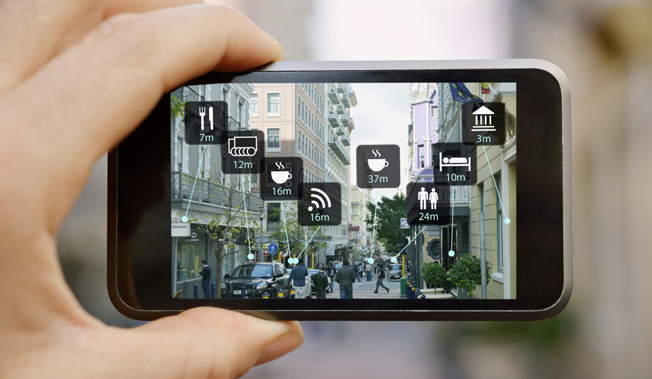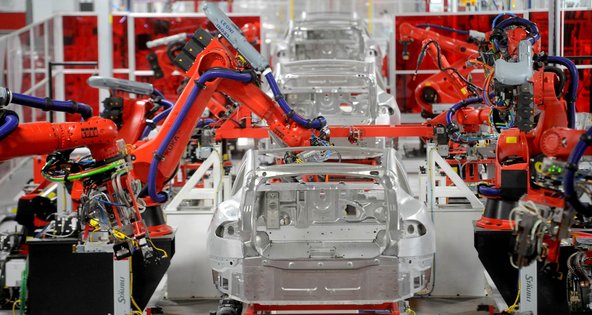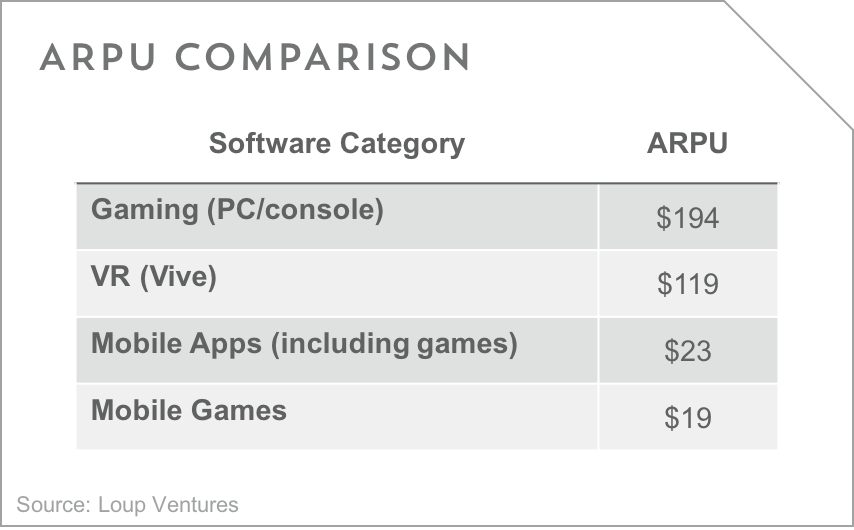The Future Perfect: Rediscovering Utopia
Technology ruined our utopia. When did humans have it better than the dawn of time? We were born with everything and nothing. The entire world was ours. Since everyone had nothing, everyone had everything. We had no property, no houses. We were free to roam and inhabit as we pleased. We only worried about survival — finding enough food and avoiding dangerous predators. We didn’t have to worry about 401(k)s or what car the neighbors just bought. There wasn’t a 1 percent or 99 percent. We didn’t have politics. We just had survival. Humanity at its purest. Then invention doomed us. It was innocent at first. Innovation made it easier to survive. Food and safety became essentially guaranteed, so we needed to find other things to define our lives. Then inventions became those things. Things not for survival, but for status. For having something someone else didn’t. For benefitting unequally based on that ownership. For handing down to the next generation so they didn’t start with nothing. Things became the new goal of survival and they defined our differences. People who had things treated people without them differently. We went to war with others who had things we wanted.
Now most of us are born with nothing. We have to earn everything, buy everything. We’re trapped in a system that forces us to chase things that maintain our differences. We innovated ourselves out of utopia and into industry, and innovation is the only way to get our utopia back.
What does the perfect future look like?
The entire world will be ours again. Everyone will be born with everything. There will be no such thing as having nothing. The future will be a world of infinite fulfillment.
This future will not be limited by time or place. We will be able to experience any place at any time. We will be able to re-experience the past and newly experience the future. We won’t need to own cars or fly on planes. Anything we want to experience will be available to us, on demand.
This future will not have jobs or chores. The mundane and the complex alike will be automated by machines that perform these tasks with greater safety, efficiency, and effectiveness than humans. Everything we do will be for a personal purpose, based on our unique talents. Creativity will become the most important human industry.
This future will not have keyboards, screens, or smartphones. Information and communication will be available to us everywhere, seamlessly. We will interact with computers naturally: with our voices, our actions, and our minds. Everything will be a keyboard. Everywhere will be a screen.
This future will not have limitations. Physical realities of the human body and mind will disappear, creating new avenues through which we find purpose and meaning.
This is the future of computing. This is The Future Perfect.
“Trying to predict the future is a discouraging, hazardous occupation … If by some miracle a prophet could describe the future exactly as it was going to take place, his predictions would sound so absurd, so farfetched, that everybody would laugh him to scorn. This has proved to be true in the past and it will undoubtedly be true even more so of the century to come. The only thing we can be sure of about the future is that it will be absolutely fantastic. So, if what I say now seems to you to be very reasonable, then I’ll have failed completely. Only if what I tell you appears absolutely unbelievable have we any chance of visualizing the future as it really will happen.” – Arthur C. Clarke (1960)
The perils of predicting the future are obvious. A better place to start, as famously pointed out by Jeff Bezos, may to be ask, “What won’t change in the future?” We ask the question a little differently: What does it mean to be human? We believe there are five core human desires as it relates to technology. These persistent desires have been the basis for the largest technological breakthroughs over the past few centuries:
- Humanity’s desire for connection
- Humanity’s desire for uniqueness
- Humanity’s desire for information
- Humanity’s desire for purpose
- Humanity’s desire for pleasure
Some combination of these five core human desires underpins the primary reasons for adoption of the following technologies:
- Written language – information and connection
- Printing press – information and pleasure
- Telephone – information and connection
- Radio – information and pleasure
- Television – information and pleasure
- PC – information, connection, purpose, and pleasure
- Internet – information, connection, pleasure, purpose, and uniqueness
- Smartphone – a ubiquitous extension of the Internet
History shows that breakthrough technologies are coming at an accelerating pace. The most recent six of those technological breakthroughs all happened within the last 150 years. Only ~15 years separates the mainstream adoption of the PC and Internet with another ~15 to reach the smartphone. And the Internet was the first to enable all five of humanity’s persistent desires. It did so by amalgamating and modernizing many of the technologies before it. Blogs, social media, and ebooks are the modern implementation of written language (e.g., books, letters) and the printing press. Facebook, Skype, WhatsApp, etc. replace the telephone. Pandora, Spotify, Apple Music, and podcasts are the new radio. YouTube, Netflix, Hulu, etc. recreate television. The PC is a terminal through which one accesses the Internet, and the smartphone is a terminal you can take anywhere. We say this not to belittle the PC or smartphone, nor any of the other prior technologies, but to highlight the transformative power of the Internet and recognize its importance in relation to the next wave of breakthroughs.
The next evolution of technology, the future of computing, must enable humans to communicate more effectively and consume information more efficiently. It must create more immersive entertainment and pleasure-based experiences. It must yield better tools to recognize our desires for uniqueness and self-expression, while also helping us find and achieve purpose. Perhaps most importantly, the future of computing must build off of the current foundational technologies. In other words, the future of computing will be a remix of what came before it. It must combine existing technologies with evolutionary innovations that create a new, better reality.
The future of computing that creates The Future Perfect is a combination of four emerging technologies: virtual reality, augmented reality, artificial intelligence, and robotics. We believe these four elements will combine to create a new life paradigm for humanity, creating an evolution beyond anything any combination of technologies has done before — an era of human super-fulfillment.
Perhaps we have a rosier view of the future than others, but we believe our optimism is justified. If we were pessimistic about the fate of humanity, there would be no point in investing in our future. Are there dangers to this new world? Certainly. But these dangers have applied to every technological development since fire. Yes, there is the possibility that our world ends up like a dystopian science fiction novel. For that reason, we are committed to focusing our capital and research efforts on pursing The Future Perfect while avoiding these potential negative outcomes. In the following sections, we will detail how this future of computing will guide us into an era of super-fulfillment — enabling us to bring about an absolutely fantastic future that will emerge over the next 50 years.
Virtual Reality
Virtual reality (VR) fundamentally changes how we experience the world. Some view virtual reality as a subset of augmented reality (AR) in that developers determine how much of “real reality” they incorporate into AR. In the case of VR, it’s none. While this argument is logical and valid, we feel that virtual reality has the potential to be so special, so transformative, that it deserves to be considered separately from AR. Many people expect AR to be a bigger overall theme than VR because AR can replace the smartphone and PC. We would agree that AR will be bigger over the next 10-15 years in terms of revenue, but advanced VR has the potential to transform nearly every industry over the next 50 years. Therefore, we believe VR is actually the bigger opportunity long term as it delivers limitless lifelike experiences, making it the centerpiece for connection, purpose, and pleasure. Before we get to future lifelike experiences made possible by advanced VR, let’s talk about the state of VR today and in the near future.
Near Term: VR Content
Hardware, software, and content are all critical for the future of VR, but content represents the biggest near-term opportunity (5-10 years) to show the power of VR through our current basic hardware. The most obvious implementations of VR content are in entertainment and communication. Many great companies already offer compelling products in gaming, cinema, live events, and sports.
Gaming has so far lead the charge in showing the possibilities of virtual reality and will continue to do so. VR is the perfect technology for gaming because its purpose is to provide interactive and immersive environments. This allows developers to transport users to the worlds they create, putting gamers closer to the action in Call of Duty or Madden than ever before. Game developers pushing the envelope with the content experiences they deliver will inspire creators of other forms of media. Advanced VR gaming will require the democratization of many features that will allow VR experiences to improve not only in gaming, but across all content types. These features include haptic feedback, gesture-based input, the ability to move in the real world to control the virtual one, etc. Advanced VR gaming is already possible through theme-park type experiences, where users interact with a real-world environment specifically designed for VR while wearing a portable VR system. While early, we believe these experiences provide a window into what commonplace, home VR systems can become in the future.
In cinema and entertainment content, VR will be a part of many transmedia strategies over the next few years. VR will provide immersive experiences as an extension of mainstream media products like an additional scene to a theatrical movie; however, VR will also enable completely new ways to tell stories. Filmmakers will no longer be limited by linear 2D storylines. The line between what we think of as movies and games will blur more than it already has. Cinematic VR experiences will enable exploration of the world created by the content creator, just like a game. There will be unique stories told all around you instead of just the main storyline. Imagine exploring the Star Wars universe without limitation: traveling to different planets, following bounty hunters, exploring the Death Star. You may be able to spend days or weeks or months in the same “movie,” taking in pieces you missed and finding new stories.
One critical element for near-term consumer adoption of cinematic VR content is to create standardized experience frameworks. We need standard, non-linear story arcs for VR cinema as well as a set of common actions (i.e., pinch and expand on touchscreens) so that consumers have general expectations for how they can interact with cinematic VR content without instruction. This standardization should not limit the ability of creators to deliver unique stories, but should have the added benefit of making VR content more scalable to build because they won’t have to recreate the wheel every time. Just as Star Wars showed the world what was possible with special effects and Toy Story changed how we thought about animated movies, there will be breakthrough films that show the true power of VR as a storytelling medium by creating these frameworks. The first truly great VR movie will pave the way for it to be the standard medium for cinematic experiences.
Live events are the last category that VR will transform near term. VR literally puts the viewer on the field or stage, giving fans access that was previously impossible. The notion of sports has already begun to change with the emergence of eSports, and the concept of “live” will shift as time fades in The Future Perfect. No matter what live events look like in the future, the idea of human performances, whether athletic, mental, musical, or otherwise will persist as an important entertainment medium; however, one thing that VR will have a hard time replicating for live events in the near term is the communal aspect. The dynamic of meeting new people with a common interest changes. There are no tailgates. The feeling of palpable excitement from others around you isn’t quite the same. All these elements represent challenges to communication platforms on VR. Social will be a key element to not only the live events space, but for VR in general.
Near Term: VR and Social
The tech industry has long awaited the “next” Facebook. We believe the question isn’t what will replace Facebook as the core place where humans connect with one another, but rather how will new technologies change the way we communicate in the first place? Mobile gave us Instagram and Snapchat, powered by pictures and videos from smartphone cameras. Mobile also gave us WhatsApp, replacing basic SMS with richer messages delivered through high-speed mobile data. This is not a question of chicken and egg — the new underlying technology, in this case mobile, came first to enable these great companies to form.
One common element in these new communication platforms is the move away from text-based communication. Humanity has gone from hieroglyphics to written words, back to digital hieroglyphics in the form of videos and emojis. Facebook began as a platform to send old-school, written messages to one another, either on our “walls” or privately. Twitter was built to send SMS-inspired 140-character messages about what you were doing. Instagram emerged to broadcast mobile photos and videos of our perfect existences. Then, Snapchat for sharing our less perfect existences. Technology is exponentially increasing how we can communicate with one another. If an emoji says a few words and a picture says a thousand, an immersive, volumetric video says infinitely more.
Social communication will evolve quickly on VR. Apple added a rudimentary photographic depth feature to the iPhone 7 Plus and there are a number of 360-degree GoPro-like cameras for consumer use, providing users with an early view into immersive communication. As has been the case with the past few core social platforms, younger users (age 20 or below) are likely to be the leading indicator of the winning platforms in VR communication.
Near Term: Market Estimates
The biggest near-term barrier to VR will be headset adoption. We believe there were about 10 million VR users at the end of 2016, the vast majority via Google Cardboard, and expect close to 100 million by the end of 2018. This would be an adoption rate roughly 2x as fast as the smartphone, which took four years to grow from ~10 million users to ~100 million. Such a fast rate of VR adoption is reasonable given that the majority of VR headsets in 2018 will be powered by smartphones (over 80% of the total). The existing prevalence of smartphones combined with low-cost VR headsets like Gear VR, Daydream, and Cardboard will enable this quicker adoption curve. We consider these smartphone-powered VR headsets “low immersion” in that they are capable of delivering basic gaming, theatrical, and live content, but aren’t capable of providing higher-end experiences that represent the truly compelling use case for VR. Computer-powered headsets like the Oculus Rift or HTC Vive are “high immersion,” but currently require non-commonplace hardware —a PC with powerful graphics capabilities. Most low-immersion headsets cost less than $100 today, in some cases far less or even free. As a result, the majority of VR users for the next decade will be low-immersion users.


Looking further into the future, we expect the VR user base to increase to over 1 billion users by 2023, which would represent about 13% of the total global population. By comparison, the smartphone has about 29% global penetration as of 2016 and was at 14% in 2012.

One of the major drivers of VR will be smartphone manufacturers including free headsets with new smartphones. We expect VR headsets to start being included with smartphones around 2020 to help boost smartphone sales. As a result, the breakdown between high-immersion and low-immersion headsets will likely stay around 80/20 through 2023. After this period, low-immersion device use will flatten as high-end smartphone users begin to switch to augmented reality wearables capable of delivering the basic VR experiences offered in smartphone-powered headsets. Simultaneously, high-immersion VR units (PC-powered or all-in-ones) will continue strong growth in the early 2020 decade, then accelerate as deeper immersion technologies like better haptic feedback, advanced gesture-based controls, and brain control interface become standard features. Beyond the next decade, we expect high-immersion VR to evolve from a digital medium powered by improving graphics and computers into a scientific one with technologies that manipulate brain chemistry. This transformation will mark the beginning of creating the lifelike experiences that represent the true long-term future of VR.
Long Term: Advanced VR
Advanced virtual reality will enable unthinkable feats to come true — things like teleportation and time travel. Considering the physical realities of both teleportation and time travel, you might think we are crazy. But if you consider that our perception of reality happens in our brains, then you can see how we can reach two of the greatest achievements from our favorite science fiction movies. Our physical bodies are just shells with sense inputs that house our consciousness. If we can recreate sense experiences identical to the real thing, we won’t need to transport our bodies anywhere. Advanced VR will allow you to transport your consciousness, leaving your physical body in its current space, kind of like a hyper-realistic dream state.
Taking a step back, the purpose of VR is to create a sensory experience similar to the real world. To get to a point where advanced VR can enable the true transportation of your consciousness, we need to be able to manipulate all five human senses with great accuracy. VR today only influences sight and hearing. We have audio and visuals. We view that as only 50% of the battle. With only two senses immersed, it’s easy to slip out of the virtual environment. Some current VR experiences may include a haptic vest or a theme park might have other touch or feeling elements. Those additions might get you 80% of the way there, making it a little harder to revert back to the real world. All of these applications, while amazingly innovative today, are still crude approximations of real-life sense experiences. Some think that full body haptic suits or chambers are the way to move toward fully immersive, five sense experiences. Thank you, Ready Player One. We think that haptic suits are a step we will take on the journey to full immersion, but the best way to trick the user into believing he or she is actually experiencing something in VR is to manipulate the neurochemistry of the brain. This early field is known as neurohaptics. There are some documented ways to trick the brain into certain sensations by using one sense, typically vision, to trigger a pattern that includes another sense, like touch. While these early attempts rely on tricking multisensory areas in the brain, we believe neurohaptics will work in the future by sending signals directly to the brain, bypassing the physical inputs of sense (eyes, nose, hands, body, mouth, ears). Advanced neurohaptic VR will allow us to transport our consciousness anywhere we want by providing experiences in our brain identical to the real thing.
There are many things we will need to learn about the brain to reach this future. The sheer number of unique sounds, colors, and smells our senses can determine is one critical factor. Scientists believe that we can hear over half a million different tones, see a few million colors, and recognize up to a trillion unique smells. We will need to catalog each of these unique sense experiences so that we can reproduce the sense in the brain neurochemically and define real-world events associated with the sense. This will require some combination of improvements in neuroscience, advanced artificial intelligence, and a networked human effort to match real-world events with the correct corresponding sense experience. Beyond understanding the sense experiences themselves, we need to develop a better general understanding of how the brain works so we can safely influence its chemistry without negative impact. Then, all experiences — eating a steak or skydiving or walking on the Great Wall of China — become nothing more than brain chemistry programs delivered by advanced VR.
While this level of virtual reality is likely decades away, we believe it is possible, and, when we get there, it will have a profound impact on the world. Where early VR can transform digital industries (gaming and content as discussed previously), advanced VR will alter physical industries that have, to date, been largely insulated from transformative impact due to technology. The biggest industry advanced VR will change is travel, enabling us to experience any place in the world through VR the same as if we were there in person. This means that travel to see family can be eliminated. No more painfully long car rides for holiday get-togethers. The same warm feeling you have in person can be replicated through advanced VR. The same can be said for business travel. You can feel the grip of the other person’s handshake and smell the coffee on their breath. Vacationing will be completely different. You can go away for a week without ever going away, avoiding jet lag and experiencing everything you could possibly want in modern Scotland or past Scotland or wherever you might want to travel. This new travel paradigm will trickle down to impact the oil and gas, automotive, airline, and hospitality industries as well. Multiple trillions of dollars of industry will potentially be impacted.
Advanced VR also changes the concept of manufacturing. If experiences transform from physical occurrences to digital or purely neurochemical ones, the need to produce physical products decreases. Physical products become nothing more than a form of code input into the brain. Products never have to go beyond the design phase. The same could be said of restaurants and the food they serve. We could subsist on some sort of Soylent-type diet, but experience it as cheeseburgers and milkshakes (or whatever your food preference).
Even vice industries will be radically changed by advanced VR, making taboo pleasure experiences much safer and less self-destructive. The sex industry, perhaps the industry least touched by technology outside of booking and promotional capabilities, may evolve into some sort of Demolition Man type of experience, but better — identical to the real thing. Advanced VR will change the alcohol, drug, and nightlife industries. Instead of partying safely by using Uber to get home, you can send the signal of partying to your brain without the negative impacts of your organs processing actual substances. Although some form of addiction is likely still an issue in both cases. These vice industries combine to represent multiple trillions of dollars to the global economy.
One interesting conundrum for advanced VR is how to balance knowing that something is not “real.” Complete suspension of reality is critical for maximizing the overall sense experience and believing you are actually experiencing whatever happens. At the same time, there will be some situations where it would be useful to know that you aren’t in real reality and you aren’t in any true physical danger. This issue could be overcome by using some sort of “pinch” type mechanism where the advanced VR user is reminded of the unreality of the situation when things become too extreme based on some biological markers.
While a Matrix-like plug in the back of the head may be the most efficient way to manipulate brain chemistry, some sort of non-invasive device would be a more realistic solution that humans would actually accept. The best solution may be some type of brain implant, perhaps one that also offers augmented reality and memory-enhancement features, merging the benefits of VR, AR, and AI for persistent human enhancement. Recognizing the human body as a fragile vessel for our consciousness, combined with the ultimate possibility of brain implants, invites the potential of mind-uploading — eliminating our physical existence as it were and reducing us to some digital representative consciousness. While we find the topic interesting, it is too far of a future for us to reasonably contemplate.
Augmented Reality
If virtual reality represents an infinite number of lifelike experiences created by limitless imagination, augmented reality is the bridge that amplifies the real world, creating an enhanced reality. We define augmented reality as the layering of artificial sensory elements onto real reality. While the smartphone will be the hardware that enables basic augmented reality applications over the next few years, AR will be delivered by wearables that replace the screen as we know it long term. Even further in the future, AR will come from a suite of connected biological devices that more completely merge man and machine, creating new ways for humans to connect in the real world, consume information, and demonstrate our uniqueness.
AR vs MR
Before we get into the near-term and long-term opportunities in augmented reality, it’s important to address another reality — mixed reality (MR). Mixed reality relates to delivering lifelike visual elements that incorporate positional information to the real world, typically through glasses or other eyewear. It’s sort of a combination of virtual reality and augmented reality where the user can interact with those virtual objects as part of real reality. Therefore, we view MR as an important delineation for the near term because it separates old AR with future AR. Old AR consists of basic heads-up displays with little capability to usefully place objects in your environment. It provides 2D overlay on our 3D world. AR that we do on our smartphones today is generally old AR. It incorporates some locational data, but isn’t putting positionally anchored objects in our real world to interact with. Future AR is MR. Mixed reality wearables with advanced position tracking and computer vision will replace smartphones and become the defacto AR experience for all humans. We won’t need old AR in the future because MR is so superior. In the interest of avoiding confusion by switching between AR and MR, we will only use the term augmented reality here given its broader scope to include smartphone applications and non-optics based wearables, but note that the future of augmented reality is of the mixed variety.
Near Term: AR Hardware
Much like virtual reality, augmented reality must be considered from both a hardware and software/content perspective. When most people talk about augmented reality hardware, they typically mean some sort of optical display device; however, we believe AR hardware should include a broader range of wearables that also include ear-pieces, jewelry-like accessories, clothing, etc.: any connected wearable device that provides you with enhanced information about your environment.
While there are some early augmented reality glasses in the market, the smartphone is the most prevalent AR hardware device. Given its cameras and arrays of sensors, the smartphone is already capable of providing fairly rich augmented reality experiences. Longer term, advanced AR wearables will do a better, more seamless job of providing augmented experiences to users, and it’s for this reason that the smartphone industry is most at risk of complete disruption by AR wearables. Whether glasses, lenses, or implants enable the future of AR, the many screens that surround us today including the smartphone, tablet, and PC will disappear as a result.
Mass adoption of AR wearables is further away than VR for two primary reasons, both related to portability: battery power and miniaturization. VR, given the indoor use case of the devices, does not face headwinds from either of those bottlenecks. The Apple Watch and, to a lesser extent, smartphones are a window into the battery issue. The portability of these devices limits their energy capacities because of design profiles that do not leave room for significant batteries. AR wearables are likely to be even more battery constrained as manufacturers try to integrate them into existing products. As a result, some early augmented wearables may rely on an external battery pack, but this solution seems inefficient and cumbersome long term. Finding a better power source using static energy created by the body or some other energy-related breakthrough will be a critical part of augmented wearable adoption.
AR wearable makers must design devices that are attractive and discreet for users to adopt them. This will necessitate shrinking the components needed to deliver augmented experiences including sensors, optics, microphones, and cameras. The ultimate goal should be to integrate these components into everyday items like reading glasses, clothing, jewelry, contact lenses, etc. without requiring changes to the original design concept of the item. In other words, while early augmented wearables will be built with AR in mind, the long-term potential lies in AR features being easily incorporated into existing and widely adopted products without significant design consideration.
Near Term: AR Content and Information
While its popularity has long since peaked, Pokemon Go has been the most successful example of augmented reality content to date (in the unlikely event you aren’t familiar, the game encourages you to search the real world to find virtual creatures that you then capture and collect). Pokemon Go was a breakout success because it not only employed a unique AR-focused concept and a popular consumer brand, but also combined elements of social validation. As users visited locations in the real world that were associated with certain parts of the game, they would see other users congregating in the same areas. Where VR can be non-social by nature because it is a fully immersive indoor activity, a key element for all AR games will be incorporating social features. For this reason, we expect AR to lend itself more to casual gaming, while VR is better suited for serious gaming. Much like mobile game developers, AR game developers should be able to create games with minimal development budgets as they will not have to deal with complicated graphics frameworks. Instead, they should only need to master some standardized development platform provided by the hardware maker (much like Apple with iOS today). AR game developers also won’t need to create vast, explorable worlds like their VR counterparts. The existing world is vast and explorable enough. As with mobile casual gaming, AR gaming will be a winner-takes-most market with a few large successes and a lot of games in the long tail.
Enhancing our real world environments with in-view content, whether gaming related or more informational, is the core use case for AR. Examples include location-based discovery and direction, physical measurements of objects, image recognition that could connect to business or personal networking tools, step-by-step instructions on how to perform specific tasks, etc. Enabling these types of AR applications will necessitate computer vision tools that can identify specific objects in our environment to enhance through AR. Good computer vision will require some combination of hardware like depth cameras, LIDAR, GPS, and other sensors working to continuously map real world objects to augment. While computer vision is a difficult problem, we expect to see a number of platforms emerge that will remove the heavy lifting from application developers. Google’s Project Tango is an early example.
Beyond where to show information that enhances the real world, compelling AR software must also have some intelligence around when to present the user with that information. Today, consumers generally have to initiate AR functions themselves because those functions are delivered through smartphones. This is an inefficient solution for wearables. In the future, augmented reality must act as a seamless helper for the user, projecting information on your environment when efficient and necessary. Much of this early intelligence is being created through simple habit-tracking and user input. More advanced AR intelligence will integrate other signals like changes in body temperature, brain waves, heart rate, and other biomarkers that can tell software how your unconscious physiological processes are reacting to your current environment. This could enable AR applications to help address specific stresses caused by the user’s environment.
Sound is a Critical Input & Output
Sound is an underappreciated element of augmented reality, as both an input and output. As an input, voice control offers an easy-to-understand solution to the interface problem of AR wearables in that they don’t have good, keyboard-style input tools. Amazon’s Alexa-powered products (Echo, Dot) are a good example of voice control. Sound input isn’t just for voice control. It can also help AR applications learn what is happening in the user’s environment to complement information picked up through computer vision. AR sound-monitoring software could recognize familiar voices, parse voice tones, alert users of dangers, etc. As an output, sound will be a valuable way for AR applications to communicate with users. The market for hearables — wearables for your ears — is just beginning to warm up. Hearables will provide users with an augmented soundtrack to their lives that includes a steady stream of information delivered via audio. They will not only send sound to the user, but also parse the sound around the user and, using a combination of the sound monitoring and intelligence mentioned above, highlight important environmental sounds as necessary.
Near Term: Market Estimates
Augmented reality wearables, primarily glasses or goggles, are further away than virtual reality headsets because of the hardware problems described above. We expect the aforementioned battery and miniaturization problems to see some resolution over the next five years, which will pave the way for AR wearables to see significant consumer adoption. We expect early mass consumer adoption of AR-dedicated hardware to start at the beginning of the next decade, but believe there will be early AR devices available in the market before 2020 that will serve more as tools for manufacturers to learn from than for mass consumer use.
One wildcard consideration for AR wearables in the near term is smartphone-powered devices. Much like smartphones powering VR headsets, it’s possible that smartphones could also power some early AR glasses. In fact, smartphones will almost certainly power early hearables and other non-visual AR wearables like the iPhone does for the Apple Watch; however, the iPhone/Watch experience highlights why smartphones powering AR wearables is only a temporary solution. Using a smartphone as the brains behind a wearable device largely defeats the purpose if you have to carry the phone with you in addition to wearing the wearable. You can find the same information — often more easily and with greater depth — on a smartphone as you could on any tethered wearable.
As we approach 2025, we expect the smartphone user base to start to contract for the first time as high-end users begin to replace smartphones with AR wearables. While we talk about AR as a broad category throughout this section (including software and wearables), here we are specifically referring to head-mounted wearables (glasses, headsets, and eventually contact lenses or implants). By 2025, head-mounted AR wearables will reach 70 million users and the death of the smartphone will be well under way; however, it is likely that low and mid-end smartphones will survive as the primary computing device for the developing world over a longer period. Therefore, the smartphone user base will likely remain in the billions through the late 2030s, but hardware and software dollar volume will shift more rapidly given Pareto’s principle. As high income users move from smartphones to AR wearables, the biggest part of the software dollars will move with them. We already see this with the iPhone today which has less than 20% global smartphone share, but closer to 80% in app dollar volume.

One additional note regarding the AR market: We mentioned above that we expect AR as a total market to be bigger than VR over the next 10-15 years. Our projection for head-mounted AR wearables does not reflect this expectation, but this estimate does not include AR software on smartphones or other AR wearable revenue. We expect those two categories to collectively make AR a bigger opportunity in the near term than VR.
Long Term: Augmented Humanity
True augmented reality goes beyond wearables that replace screens, computers, and smartphones. The true future of AR is about persistent enhancement of humans by machine, including biological enhancements, not just omnipresent information interfaces. A better way to describe it may be augmented humanity. In this future, humans will be enhanced by advanced augmentation like infinite, photographic memory and physical monitoring that tie to in-view information systems. Augmented humanity will be achieved through some combination of implants to deliver the digital side (memory, information) and some form of nanorobots or other nanotechnology to monitor and manipulate our bodies at the cellular level.
Given the almost god-like experience that advanced VR can deliver, it makes logical sense that man would want to be augmented by machines. Since we won’t spend all our time in advanced VR, at least not initially, humans will want to experience the real world closer to how they experience the absolutely fantastic virtual one. Through augmented humanity, we won’t have to remember anything because our implanted hardware will remember everything for us. We won’t have to learn anything because that same hardware will will create cortical patterns in our brains that make us experts instantly. We won’t have to go to doctors because our bodies will automatically recognize problems and self-correct them with the help of internal or external devices. Augmented reality supercharges our brains externally by providing real-time, in-view information through our eyes and ears, but augmented humanity supercharges our entire bodies. We will all be the Six Million Dollar Man (or Woman), which will certainly make the real world more tolerable.
There is some obvious crossover between augmented humanity and the technology required to deliver advanced VR. Using the same brain manipulation techniques, neurohaptics could provide augmented humanity with lifelike virtual experiences in real reality, although the usefulness of it may be limited by how much virtual content we want to experience in real reality with other humans around us. In any case, whatever hardware ultimately evolves to deliver augmented humanity will also offer advanced VR functionality in one device as those enhanced states merge.
Artificial Intelligence & Robotics
If we end up spending all of our time in advanced VR or living as superhumans through augmented humanity, how will anything get done? Artificial Intelligence (AI) and robotics are the future of getting things done. They are the future of labor as we know it. We think of AI as the brains and robots as the brawn of the machine economy. There are few tasks performed by humans today that AI and robots wouldn’t perform better. AI programs can be infinitely more logical, unbiased, and efficient in knowledge professions, and robots don’t need breaks, don’t get sick, and don’t have personal lives getting in the way of doing physical labor. There is no question that the majority of today’s jobs will be automated in the future, but the good news is that replacement of human workers by machines will happen gradually and there are some important tasks uniquely suited to humans. We will still have a productive function in the future, but purpose will look a lot different for most of us than it does today.
AI vs Robotics
One note of clarification: We recognize that artificially intelligent software performing an automated task could be considered a robot. For the purposes of our discussion, when we say robotics we are referring to physical robots. When we say AI, we are referring to automated software systems without a physical presence. In most cases, AI will be a component of physical robots, but for our manifesto, we will still consider the entity a robot. The purpose of delineating between the two, even though they are inextricably linked, is to separate the impact of AI and robotics on knowledge work and blue-collar work.
Near Term: Jobs At Risk
Unskilled to low-skilled labor (work requiring minimal to no schooling) is at the most immediate risk of robotic replacement. We need not discuss this in too much detail as we are already seeing some blue-collar labor — simple repetitive tasks like factory work or retail cashiering — being replaced by robots. Similarly, low-level, non-physical office support tasks like calendar management and note transcription are being replaced by AI. As our natural language processing capabilities grow, artificially intelligent messenger bot platforms will put customer service jobs at risk. It should not come as a surprise that low-skill jobs are the first to go, but note the systemic issues this could cause on our economy. Low-skilled workers are already in the lower income brackets, thus the conversation around income equality could become more pronounced as robotic automation eliminates these jobs and the gap grows larger.
Knowledge workers are the next in line for obsolescence. In the near term, these skilled workers will use AI-enhanced tools that help them do their work more efficiently, automating simple parts of the job and leaving the more complex decisions to humans; however, the skilled humans will be training their replacements as the AI learns how thousands of workers do a specific job and aggregates that knowledge into a program that does it better. During the transition to knowledge-working AIs, there may be human-level checks for some interim period, much like humans needing to take the wheel in certain autonomous driving situations. This means that one human may oversee many AI programs working at once, but the potential for human error or bias remains. Philosophically, using human checks just transfers the responsibility of a decision from an AI to a human, which is comforting to humans today given skepticism around AI. Longer term, as humans learn to trust AI, we believe humanity will agree that the decision-making of the AI is likely to be superior in the majority of cases.
As AIs combine specialized knowledge about these skilled tasks with improvements in language understanding, they will be able to conduct business directly with humans. Client-facing work that relies on simple logic-based actions, which could include investment advice or insurance, are all likely to be at risk. We are already seeing this with “roboadvisors,” although we might call them low-level AI advisors. Computer programming and related tasks could also be at risk — who better to write computer programs than a computer itself? A human could just tell an AI what it wants to create and the AI will find the most efficient way to do it.
We believe the knowledge-work AI revolution is still early; however, since knowledge-work AIs need not have a physical presence, when the AI shift happens it will be quicker than the shift for low-skilled workers because it won’t require the installation and maintenance of physical robots.
Trade work that requires both a bit of technical knowledge, physical ability, and creativity creates a unique challenge for AI and robotics. This type of work seems better protected than knowledge work because the replacement requires both an artificially intelligent system capable of understanding abstract problems that change based on the situation as well as a physical robotic presence capable of implementing the optimal solution. Perhaps a little more appreciation is deserved for our electricians, plumbers, carpenters, and other trade workers. However, as computer vision, robotic capabilities, and AI improve over time, these jobs will also end up being automated.
AI/robotic replacement for each of these three job categories — unskilled, knowledge, and trade — requires neither artificial general intelligence (replication of human intelligence) nor superintelligence (intelligence far beyond any human). The replacement of these jobs can occur through specialized AI and robots developed for the specific tasks related to those jobs. Specialized AI should be far easier to create than artificial general intelligence (AGI or full AI) or superintelligence, particularly with input from workers currently performing the jobs. AGI and superintelligence are longer-term goals with greater potential benefits as well as costs that have been well outlined by others. In our view, advancing toward AGI and ultimately superintelligence is connected to the neurohaptic technology we foresee for VR and AR. As we better understand how the human brain works and how we can manipulate it, we can transfer that knowledge to create an artificial human brain or something close that would be our first AGI.
Near Term: Job Market Estimates
America’s workforce currently totals about 149 million people. We believe that about 113 million of those jobs are at risk to be replaced by AI or robots in the future. Around 24 million are unskilled or low-skilled jobs (e.g., secretary, truck driver, factory worker, etc.) and in danger of being eliminated in less than 10 years. There are 49 million jobs in the knowledge worker sector (e.g., financial services, accounting, computer programmers, engineers, etc.) that are likely to see significant replacement from machines in the next 10-20 years. Then another 22 million trade type jobs (e.g., electricians, plumbers, technicians, scientists, etc.) are at risk 15+ years out. Additionally, there are 19 million jobs at risk for people in management, which will become superfluous if there are no workers to manage.
In each of those four buckets, except perhaps the first, there is a fair argument to be made that some human workers will remain for long periods of time. An example might be a manager going from managing a group of 20 people to using a single AI system capable of doing the jobs of 20 people. This is the human-check safeguard. Thus, not all the 113 million at risk jobs will disappear for humans in the next 20 years, only the vast majority. While this analysis only looks at US jobs, we believe it is a microcosm of all developed markets. Less developed markets may have some cushion in that wages are so much lower than developed markets that AI and robots aren’t a cost-efficient solution in the near term. Longer term, we believe less developed markets, with generally less skilled labor forces, will be subject to the same realities as the developed markets: AI and robots are just better at work than humans.

Long Term: Work In The Future
The prospect of a shrinking job market is scary because we associate jobs with the health of our economy and our ability to feed our families; however, in our job breakdown above, we found about 36 million “safe” jobs in the 149 million total US workforce. Thus, not all human jobs are at risk and there are societal remedies to decreasing income from human labor. That is why our education system and government are critical factors in addressing our automated future.
So, what will we do for jobs in the future? The human traits that machines will have the most difficult time replicating, even in the long term, are empathy, emotion, and trust. For that reason, jobs centered on those human qualities are the safest long-term professions. There are four categories that require those traits in some degree: high-level management, politics, creative professions, and human assistance and care. In simpler terms, community and creativity will be left to humans. While it would be fair to argue that empathy and trustworthiness are debatable qualities of some currently in management and politics, human nature will dictate that humans control businesses and governments, not robots, if for no other reason than the dystopian fear of a Skynet-like world. Humans will always be more comfortable being led by other humans rather than robots. In terms of creativity, while the infinite monkey theorem proves that if you have enough computers randomly creating art (or music, or books) you would eventually create a Picassso, computer-generated art does not have the story behind it that human-generated art does. What inspired it? Why was this person the one to deliver it? How do this person’s feelings speak to our own? A computer could also generate an emotional story to go with any art it creates, but that would require lying to humans if it didn’t disclose the fiction of the story, which negates the point of it in the first place. Finally, humans will likely have a lasting aversion to robots providing them assistance or care. While some robots are likely to help with human care, people will want other humans to be the primary providers of services like medical care, elder care, physical and mental therapy, etc. AI and robots cannot have the natural and authentic empathy required to do those jobs well. The bigger risk to these care-based jobs is that some sort of technology eliminates aging and disease, which would eliminate the subsequent need for care in the first place.
While it is promising that humans will still have some productive purpose in the world, the downside is that those four job categories make up less than a quarter of jobs in the US today. This would seem to be an opportunity to refocus our education system around teaching creativity, the arts, and empathy. Perhaps that’s the way it should have always been. Subjects like advanced math and history will become essentially irrelevant, instead becoming downloadable skill sets and knowledge bases in our augmented humanity future. Related to creativity, we may be able to download instructions to play the guitar or paint, but we can’t download a new, unique creation authentic to us. That is up for us to imagine and create.
As we focus more on the core skill sets of creativity, empathy, emotion, and trust, finding ways to enable humans with those skills to monetize them will be crucial to enabling some level of income. Marketplaces like Uber and Hourly Nerd are early examples of monetizing human capacity, and Patreon is a good example of a marketplace for supporting the arts, but new services must emerge that focus on more abstract forms of value creation.
Even if we adapt our education system around robot-safe skills and create marketplaces for these future skill holders, the concept of industry and trading income for human production will be forever altered. As a result, it seems some sort of socialist economy is the most logical outcome from the takeover of robots if humanity is to survive with some of the comforts we’ve been trained to expect over the past hundred-plus years. This new socialist-style world may mean that governments own and maintain the vast majority of producing robots in a set-up more akin to communism (don’t read that with the typically associated negativity, just the concept as defined). Or it could mean that the government taxes robot-owning corporations such that the vast majority of profits are the government’s to repurpose through some type of universal basic income. Either case assumes that man maintains authority over machines to the extent that we can direct how the benefits of robotic production are distributed, which is one of the most important parts of our AI-enhanced future. We must develop artificial intelligence responsibly.
Where We Could Be Wrong
Our predictions of the future might all sound like the setup to an episode of Black Mirror and certainly things could go wrong. We’ve been wrong about a lot of things (like that time we thought Apple was going to make a television). We believe in this vision of the future. It’s our fund’s mission to pursue it, but here are some thoughts on what might prevent us from reaching The Future Perfect.
Will humans really want this?
One argument against our vision of super fulfillment through VR is posed by psychologist Robert Nozick’s 1970s Pleasure Machine thought experiment. The basic premise was that if humans were able to use a machine that provided any pleasurable experience they wanted, and it was indistinguishable from reality, would we prefer the machine to real life? Nozick concluded that experiencing pleasure is not all that matters to humans, thus he believed humans would not prefer the machine to real life. We have the advantage of considering a world where humans need not work and may not face the same prospects of a defined life period. In our opinion, these two future developments drastically change human motivations for purpose and legacy, which are traditionally filled through careers and families. If these fundamental elements of human drive are altered, it would seem to free us to be driven more by unique experiences than finding some intangible purpose through struggle. The cynical view might be that many of us already live vicariously through others on Instagram and Snapchat, so it’s not that hard to believe we’d opt for some fabulous reality indistinguishable from the real thing. The Internet and social media have given everyone a view into everyone else’s lives, and many people prefer the lives of others to their own. Not to say this hasn’t always been the case. Neighbor anxiety has existed forever. It’s just that now everyone is our neighbor. Our digital lives are already so enmeshed with our real lives that it can be hard to separate the two. The embrace of a virtual reality that is hard to distinguish from real reality is not as far of a jump as it may seem.
Attempts at a perfect future have been made before. Why is this different?
Efforts at utopia have failed in the past because humans got in the way. Not because we are an inherent problem to be solved, but because we all have different ideas on what our individual utopia looks like. In our current physical world, to reach utopia, we would all have to agree on a single utopia for it to work. The odds of that happening are next to zero. Multiple utopias in the real world don’t work because alternative views on the perfect society lead to differences and differences lead to conflict and we aren’t in utopia if we are warring with others. But multiple utopias are precisely the solution with advanced VR, AR, and artificial intelligence. Different people can experience the same real world two completely different ways. They can either engage in their own immersive utopia through VR or a manufactured utopia through AR and AI where one person’s perception of the real world is his or her version of utopia while another person experiencing the same world has a different experience. Utopia works in the future because VR, AR, AI, and robotics combine to offer each of us our own personal utopia without detriment to another person. This combination solves the human bottleneck in creating The Future Perfect.
If robots do all of our work and we live in VR all day, isn’t that some sort of dystopia?
It could be, but perhaps not as dystopian an outcome as Hollywood would have you believe. The dystopian element to sci-fi worlds is usually some combination of run-down small dwellings, people living on top of one another, no room for nature or beauty. Over-crowding is an inevitable reality of the human condition; if we don’t keep reproducing, we go extinct. If any individual doesn’t reproduce, his or her lineage stops. Assuming our population keeps growing by about 1% a year, the world will have almost 10.5 billion people on it by 2050, 50% more than today. While we see opportunity in space colonization and seasteading, those accomplishments may be even farther away than our vision for The Future Perfect. We believe that humans will want and need to escape this over-crowded world to live to feel fulfilled. So, if we wind up in a future where we live in small, Thoreau-approved dwellings with basic expenses covered by the government, we could spend as much time as we want exploring and experiencing. Does it make a difference if it’s in a virtual environment or real environment if the experiences are indiscernible from one another? That doesn’t seem all that dystopian to us. Actually, it sounds like living in New York or Beijing and leaving the city to spend a weekend in the country. In The Future Perfect, it’s always the weekend.
If exceptional events happen frequently and on demand in the future, does that change what fulfills and excites us?
Probably. Fulfillment is relative, but this has historical precedent. If you told a human of four or five hundred years ago that they could eat as much food as they wanted and have access to transportation that would allow them to travel great distances with relatively little effort, it would likely bring them great fulfillment. Super fulfillment. Today that is just our reality, but it doesn’t fulfill us because it’s expected. Thus, when we experience fulfillment in the future, we will want more. We will expect more. That is our nature. In the past, the only answer to this was to work more or invent more or build more. We had to exert great physical and mental effort to create more by shaping some type of matter into more. Metal into cars, oil into gasoline, silicon into computer chips. In the future, more is a digital creation where the world is not bound by matter, but bytes. And bytes are a lot easier to create than matter.
Fulfillment is oftentimes more perception than reality. Something we expect to bring fulfillment often leaves us unfulfilled. This is where VR and AI combine. In the future, when we demand new experiences to make us feel fulfilled, artificial intelligence will predict what will excite us based on our prior experiences and develop new adventures unique to the individual.
If we don’t have to work anymore and can spend the whole day in a pleasurable world of our creation, what will it mean to be human?
Without the necessity of production-based employment, humans will be free to find purpose through the things that make us unique from machines: creativity, community, and experiences. There will still be great purpose in creating art, whatever that looks like in the future, both for real reality and virtual reality. Our creative creations may be imperfect compared to things that artificially intelligent or superintelligent machines create, but those imperfections, much like art today, will add to the uniqueness and authenticity of those creations and who we are. There will still be great purpose in organizing and leading humans. Making sure that the human need of connectedness is fulfilled in our technologically super-connected world. Making sure that the systems of our perfect future benefit humans equally. Making sure we maintain control, or at least good relations, with our artificially intelligent counterparts. There will be great purpose in experiences to enrich your life. Humans might not have to build houses or fix cars or fly planes, but they might want to experience all of those things and advanced VR will make it possible. More likely, humans will want to have new and yet-to-be created experiences that will only be possible through advanced VR. Experiences become the game of life.
In a sense, the future of computing frees humans to be more human. We will be free to do what we are uniquely capable of, leaving redundant skillsets and responsibilities to machines. In doing so, both machines and humans will specialize in what they are best at, improving the world for all – the utopia we envision.
I like work. What if I want to keep working?
Psychologically, we don’t think that people who identify as loving their jobs actually love the specific actions they’re performing. They love the feeling of accomplishment they get from doing it, from creating something. They like the recognition. They like the competition. They like the experience of learning and improvement. In short, people who love their jobs love the intangible rewards of their work. As we’ve said, there will still be opportunities in the future to find purpose, but it will be through different work than we do today. It will be through creativity, community, and experience. Any of those future pursuits can yield the same intangible rewards from work. They may even yield additional tangible rewards. Perhaps the future isn’t so much a socialistic one, but an evolution of capitalism. Capitalism Next. Everyone is born with a great standard of life and those that choose to work are afforded additional rewards, both tangible and intangible. That sounds like a perfect future.
Will the government hold back AI/robot development?
Many people have an irrational fear of robots, which we think is created by the media. When a robot has some type of failure that causes harm to humans, like the Tesla accident in Florida, it’s national news. Our availability heuristic kicks in and we incorrectly assume that robotically driven cars are more dangerous than human-operated vehicles; however, those that report the Tesla news usually fail to note that almost 3,300 people die a day globally in cars driven by humans. Human-piloted automotive deaths are so common that they barely register to us.
In reality, robotically controlled machines of all types are bound to be safer than human-controlled ones because robots do not have the same faults as humans. They aren’t tired from being up all night with a baby. They aren’t texting their boyfriends or girlfriends. They aren’t mad at the person that just cut them off. They aren’t aggressively singing along with the song of the summer on the radio. We as a society need to embrace the relative improvement in safety as we shift to robots doing things that humans used to; however, it is a definite and unfortunate possibility that some politicians campaign on platforms around limiting AI and robots. These politicians will campaign on the fear of change, job loss, and the potential dangers of a machine acting without human influence, all while ignoring the significant potential benefits of properly implemented AI. As with most human progress, the government can only slow AI and robotics so much before being overwhelmed. More sensible politicians will look for ways to actively participate in the AI trend, particularly around creating safe environments for controlled development of AI such that we don’t have to contend with a malicious superintelligent being.
Won’t superintelligence destroy humanity like it does in every science fiction movie?
We begin our answer to that question with a question: Can you remember any Hollywood movie about the future that wasn’t dystopian? We have been biased to fear technology in the future by the entertainment industry because evil machines create conflict in the story. If the future were a perfect place to live, then there would be no conflict in the movie and no one would want watch it. It’s availability heuristic again — we can more easily imagine a dystopian future because of our science fiction experience in the current world. With that said, yes, it is possible that humans create some sort of general artificial intelligence that ultimately evolves into a superintelligent being, and that being may decide on some goals that are not compatible with the survival of humanity. Although, even in this scenario it is unlikely that robots hunt us down person-by-person out of malice and more likely that they just starve us from resources critical to our survival, either intentionally or unintentionally, to achieve whatever their ultimate goal. Even though we believe the risks of a superintellgent being destroying the world are smaller than science fiction would have us believe, anyone developing or investing in AI has a Pascalian duty to approach it responsibly.
Conclusion
Let’s recap: We have a world where humans don’t have to work. We are supported with basic or perhaps beyond basic needs through some sort of socialistic government as a byproduct of an artificially intelligent and automated world of production. We can experience whatever we want, whenever we want in lifelike reality from our own homes through advanced VR. When we decide to venture into real reality, we have augmented humanity devices to enrich our surroundings along with infinite memory and biological optimization. We are free to explore our creativity and express that as a means to finding our unique purpose. The Future Perfect seems to be a pretty good way to describe that — humanity unbound by the constraints of our modern world. Perhaps that’s how we find the closest thing to equality across humankind: equality unbound by the natural inequalities of genetics, economics, politics and social status.
If you think that sounds crazy, good. We’ve done our jobs as prescribed by Arthur C. Clarke in the intro. Consider this: What would a person from the Middle Ages or the Renaissance Period or even the American Revolution think of our world today? Those periods each saw breakthrough innovation, but lives didn’t change tremendously over that 500 year plus period. Horses remained the main mode of transportation, agriculture was a staple in local communities, and nearly everything was man-made. They would have never believed in the possibility of air travel, automobiles, GMOs, or robots doing the work of humans. Technology is accelerating that shift. Even 50 years ago, who would have believed in the concept of a smartphone? They didn’t even have personal computers. Now we carry the ability to talk to everyone in the world and access the entirety of human knowledge in our pocket.
The Future Perfect isn’t going to be created just by coders, but by chemists, biologists, neurologists, and other scientists. It will also be created by artists — filmmakers, writers, or other storytellers. It will be created by people who understand how to affect both the real world and virtual worlds. The next wave of great startups is going to be less about two people in a garage and more about two people in a laboratory or a studio or a classroom.
We aren’t just predicting The Future Perfect. We are actively pursuing it by hunting down this new breed of entrepreneur that shares our vision. We think the best VCs are trying to help build a specific future, not just invest in a bunch of great teams. Our full vision of the future won’t play out in 10 years or even 20, but it probably won’t take 100 either. We know our prediction for the future will be wrong in some ways. Maybe a little wrong, maybe a lot wrong. But we also know that these four core technologies — VR, AR, AI, and robotics — will shape our future and create a better world. Whatever that world looks like, getting there from here won’t happen by just flipping a switch. There’s a lot of evolution that needs to happen first, and the groundwork for it is being laid today. Now is the time to invest in this future of computing. Now is the time to pursue this absolutely fantastic future.
By Doug Clinton with Gene Munster and Andrew Murphy
Disclaimer: We actively write about the themes in which we invest: virtual reality, augmented reality, artificial intelligence, and robotics. From time to time, we will write about companies that are in our portfolio. Content on this site including opinions on specific themes in technology, market estimates, and estimates and commentary regarding publicly traded or private companies is not intended for use in making investment decisions. We hold no obligation to update any of our projections. We express no warranties about any estimates or opinions we make.

 Our TOPPODCAST Picks
Our TOPPODCAST Picks  Stay Connected
Stay Connected


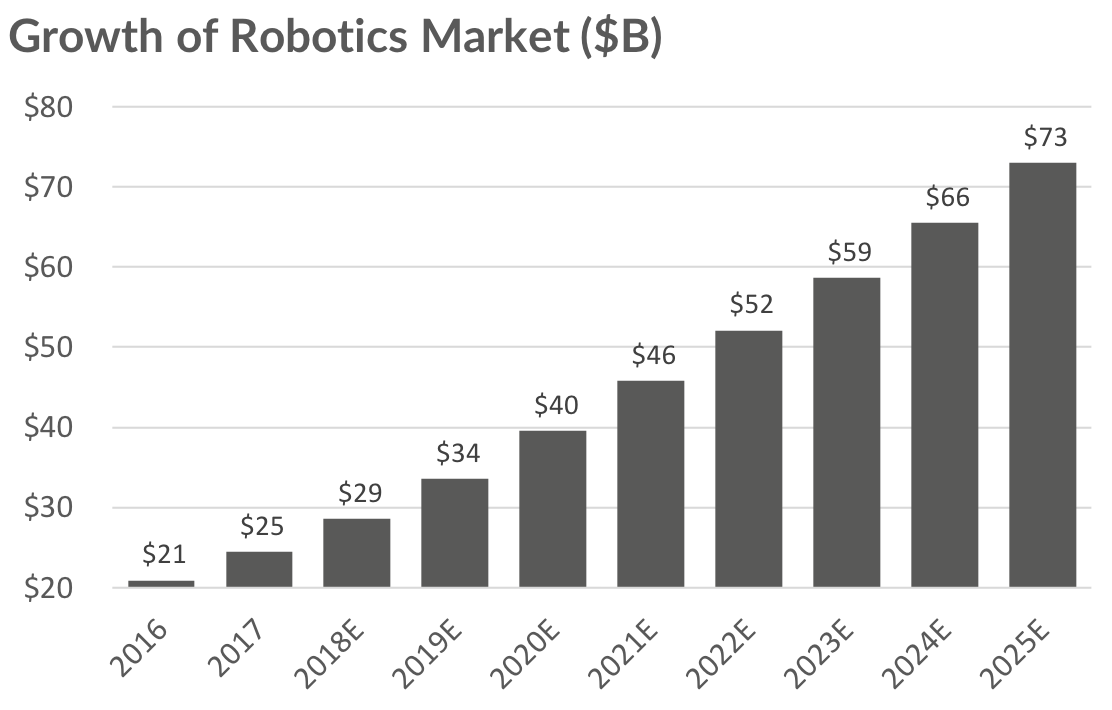

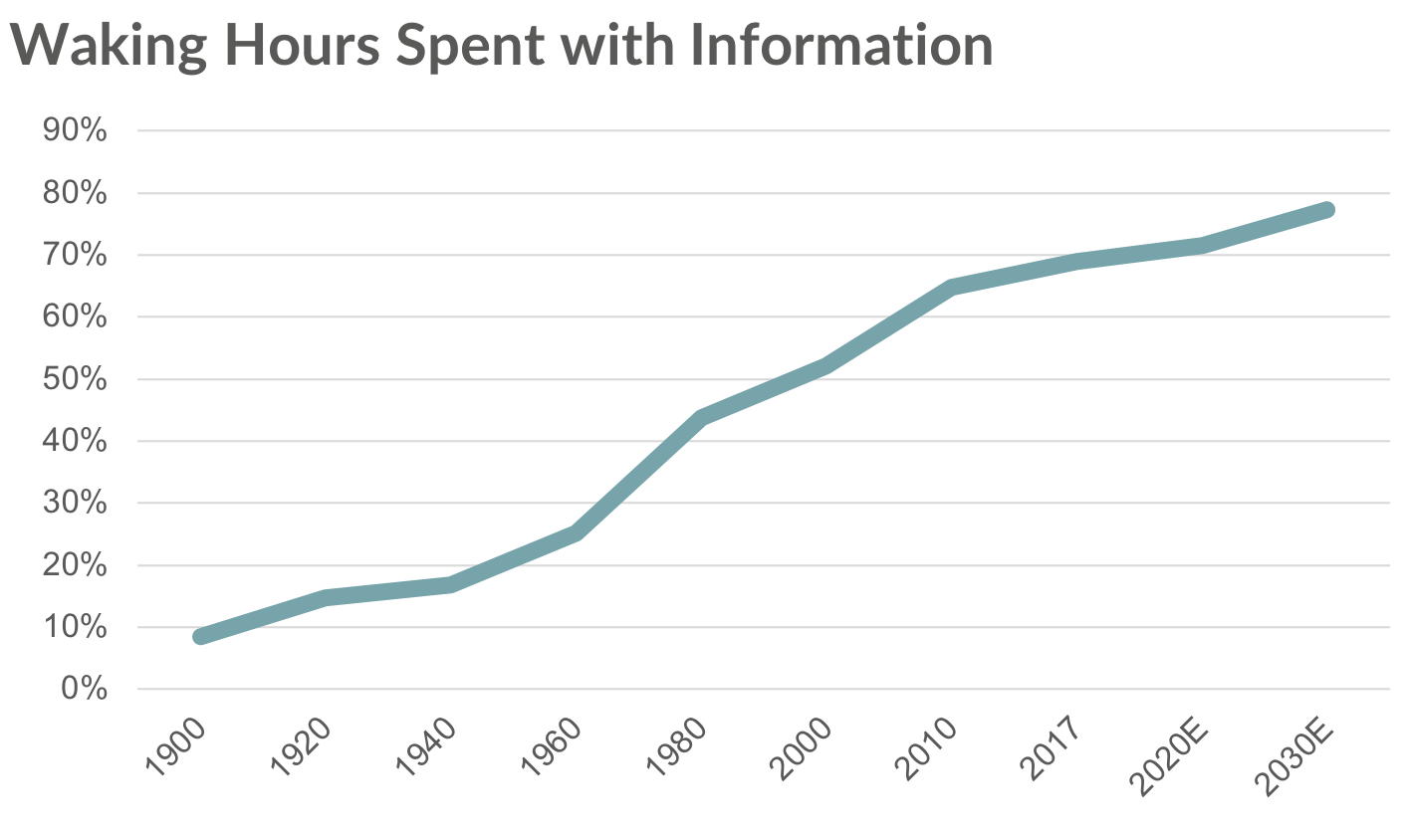
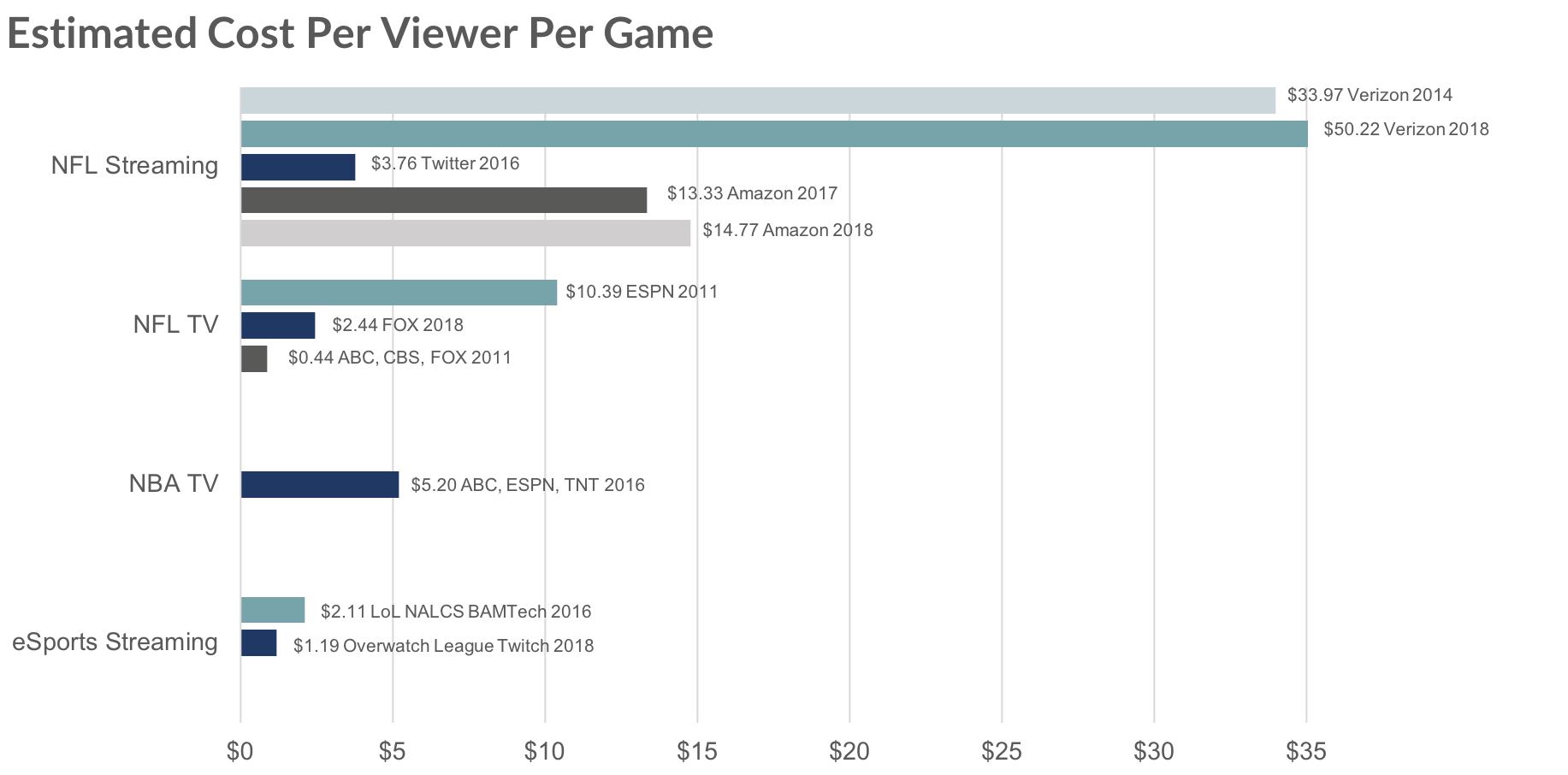
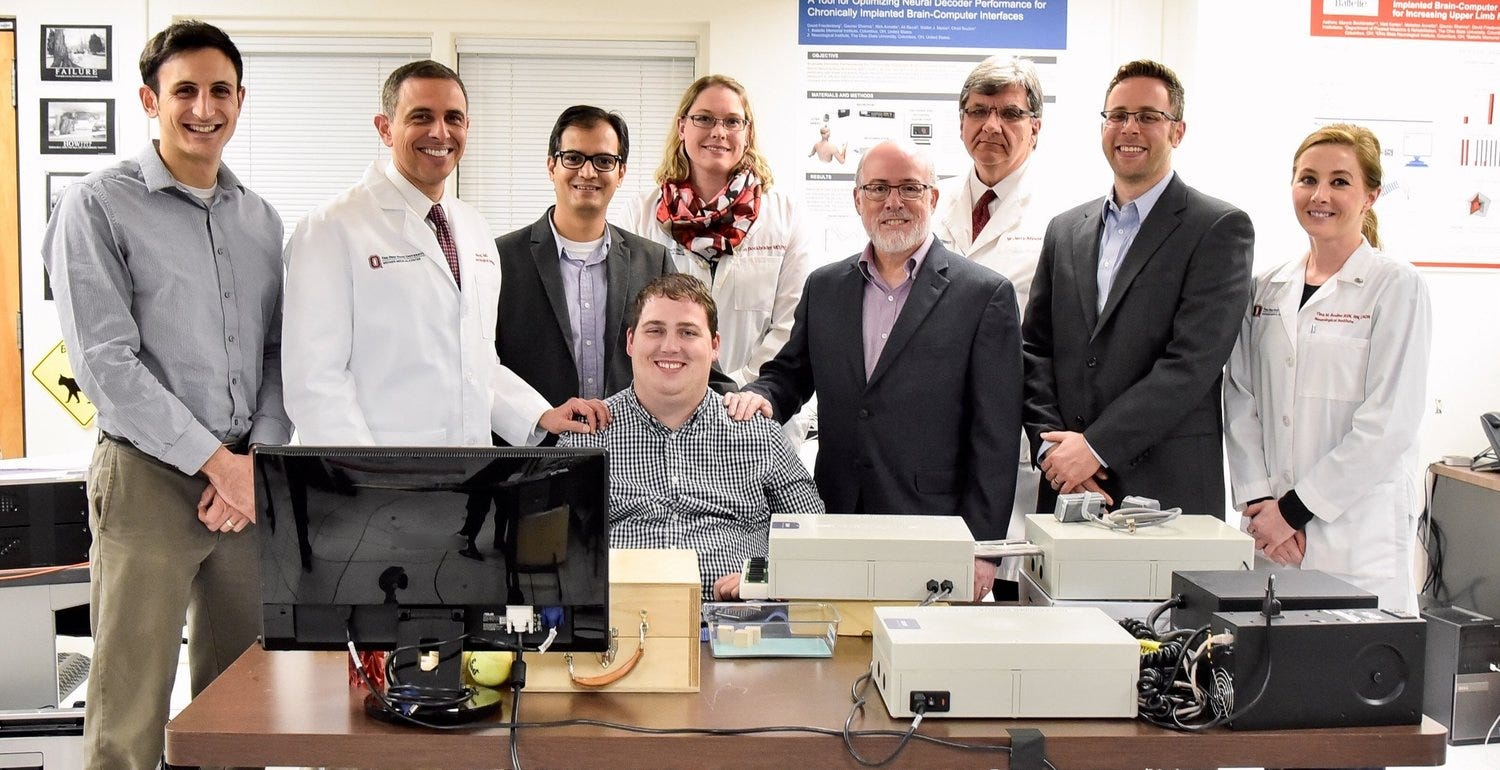 Image:
Image: 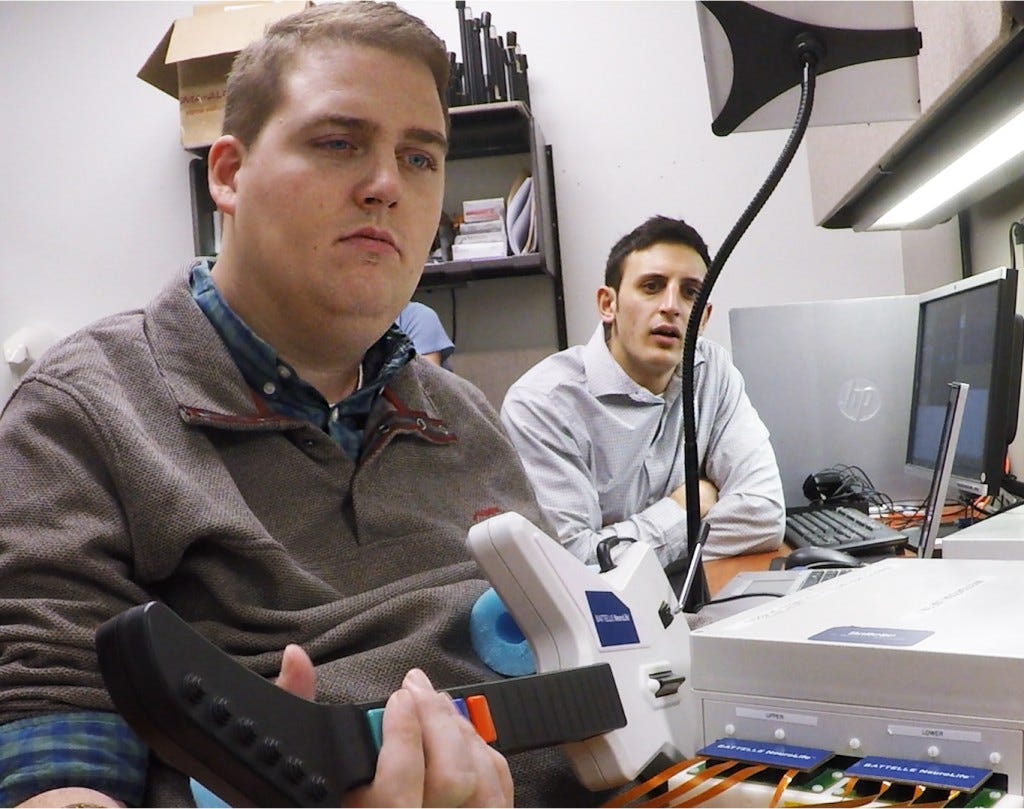 Image:
Image:  Image:
Image: 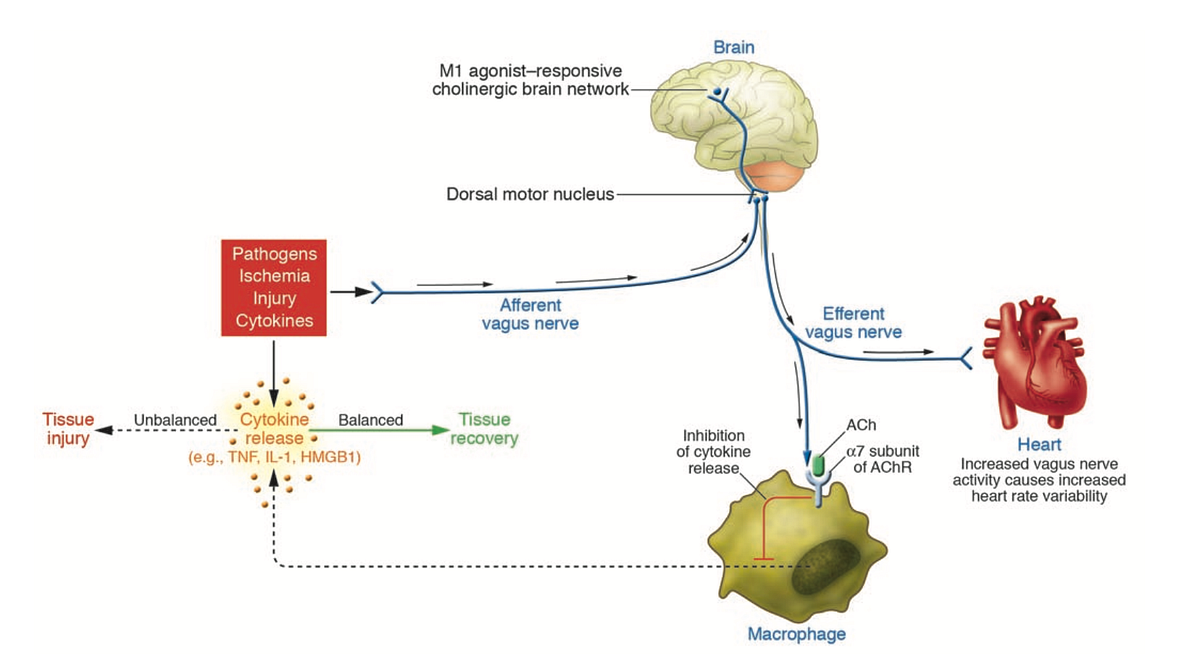 Image:
Image: 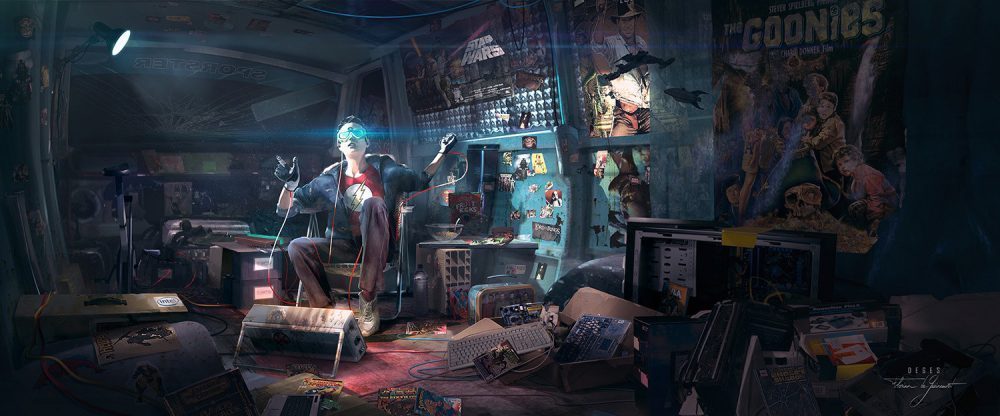







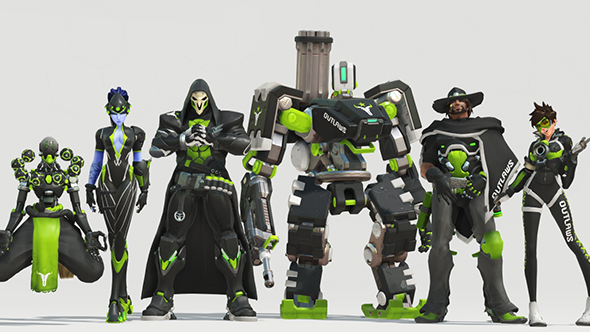
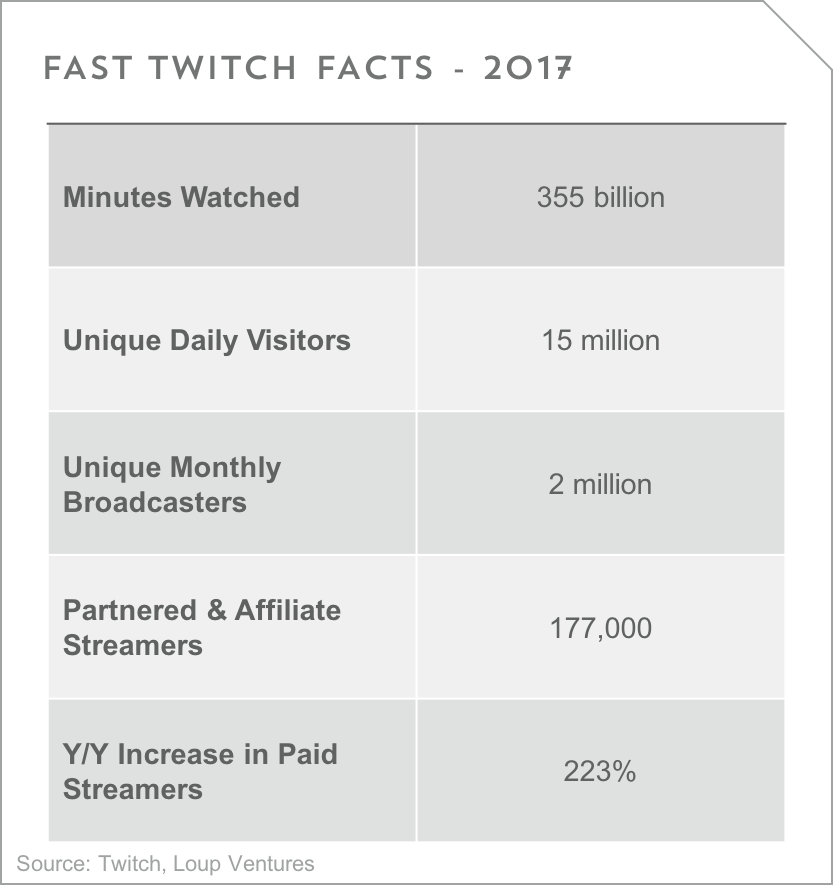





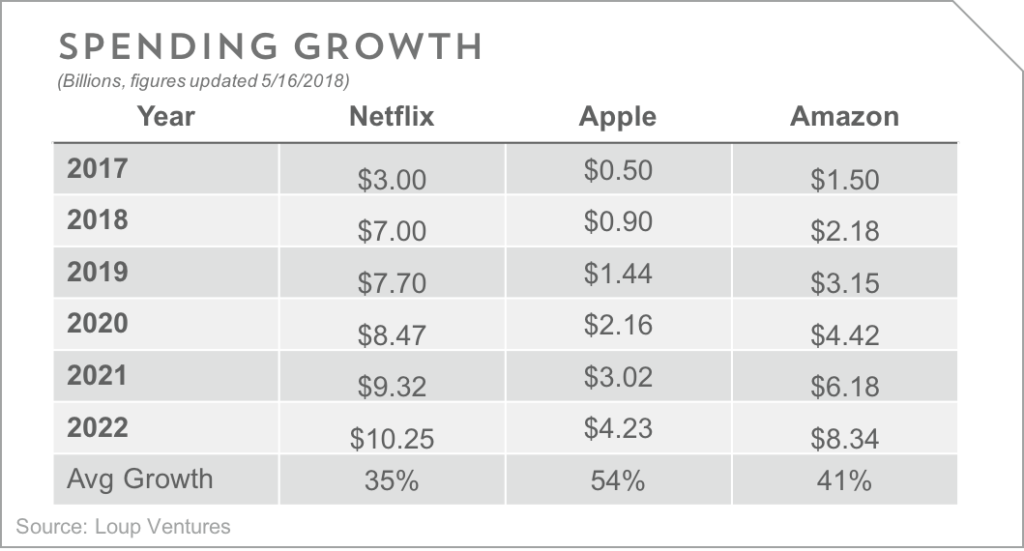
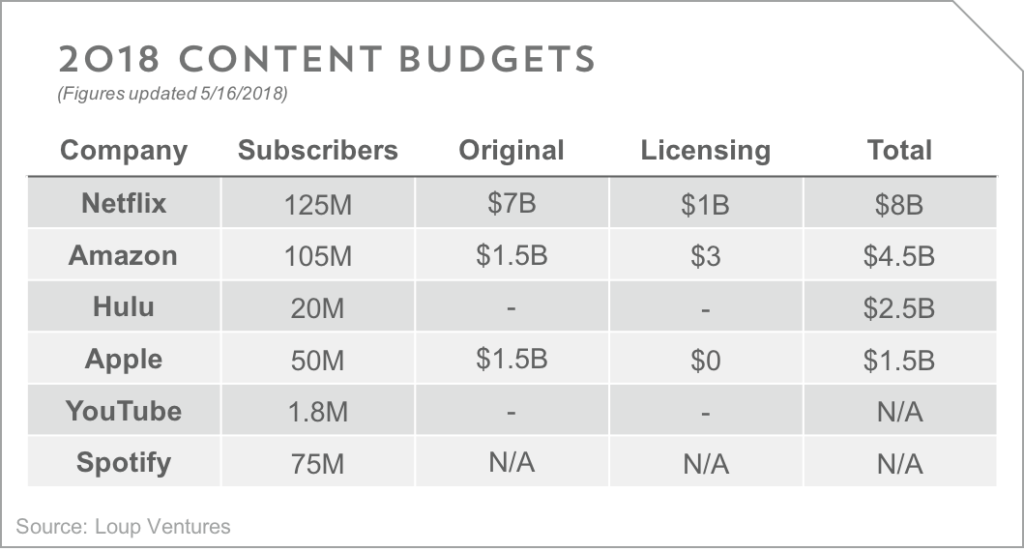
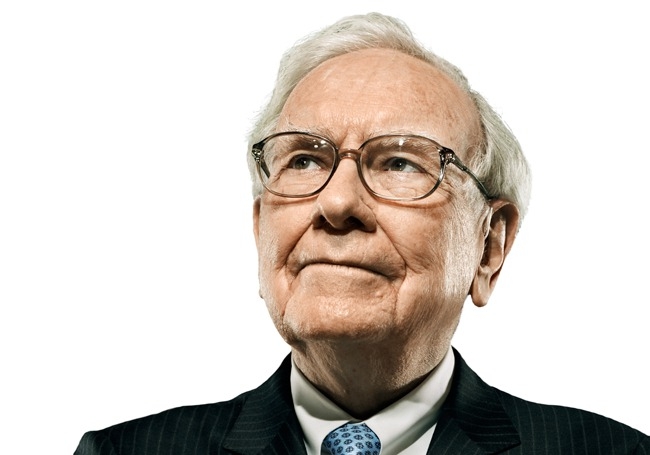


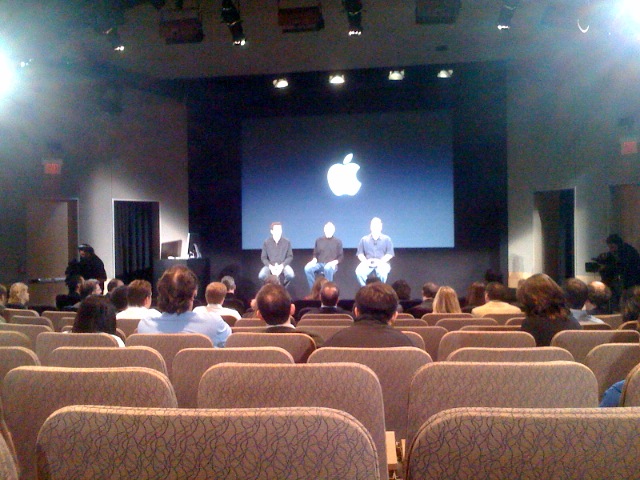













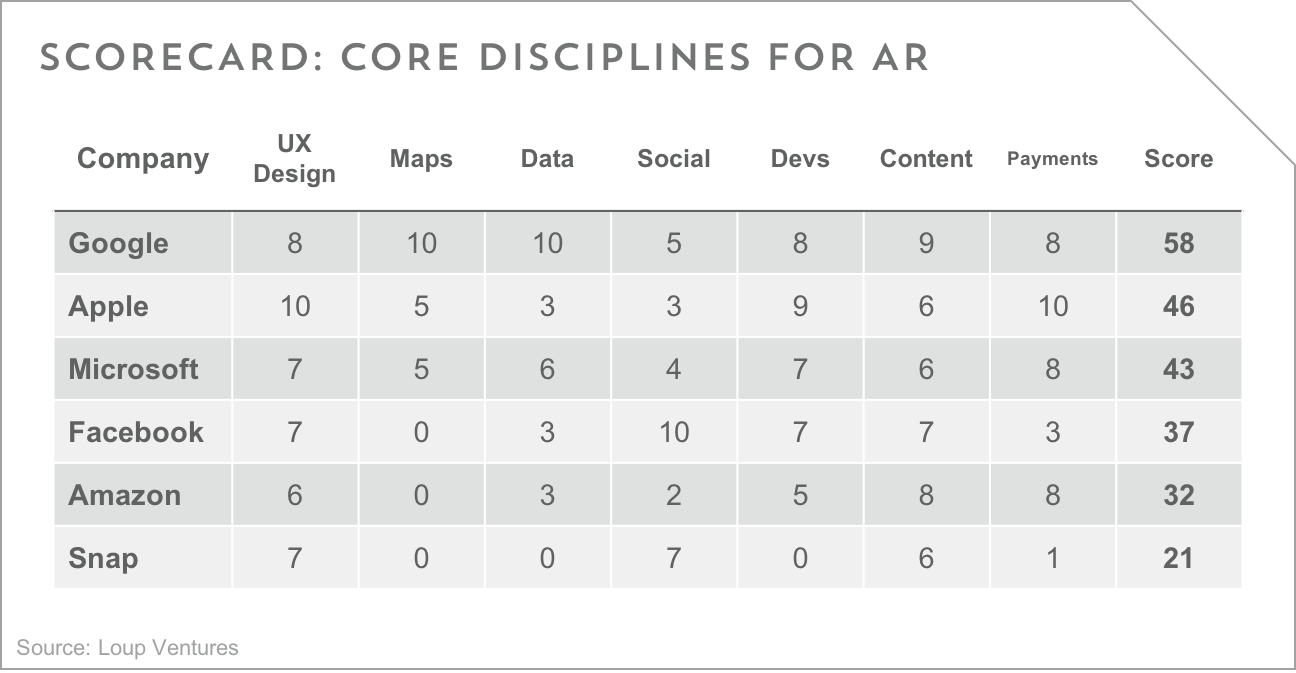

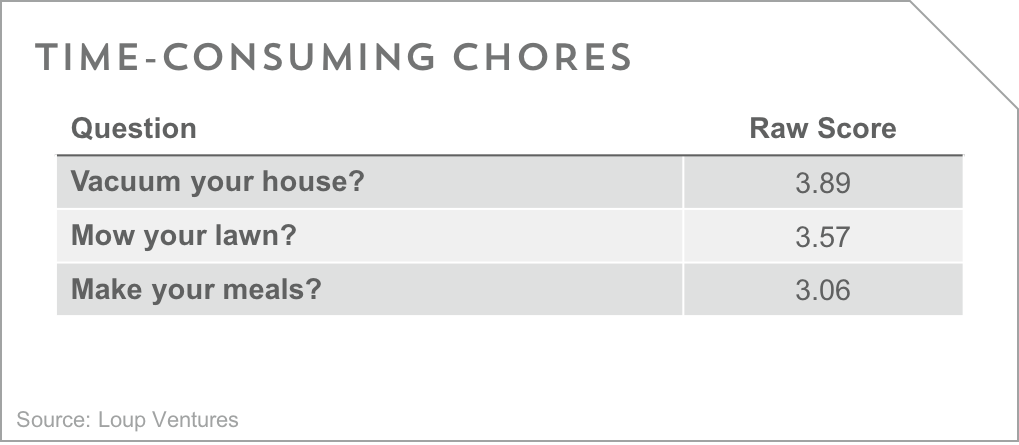
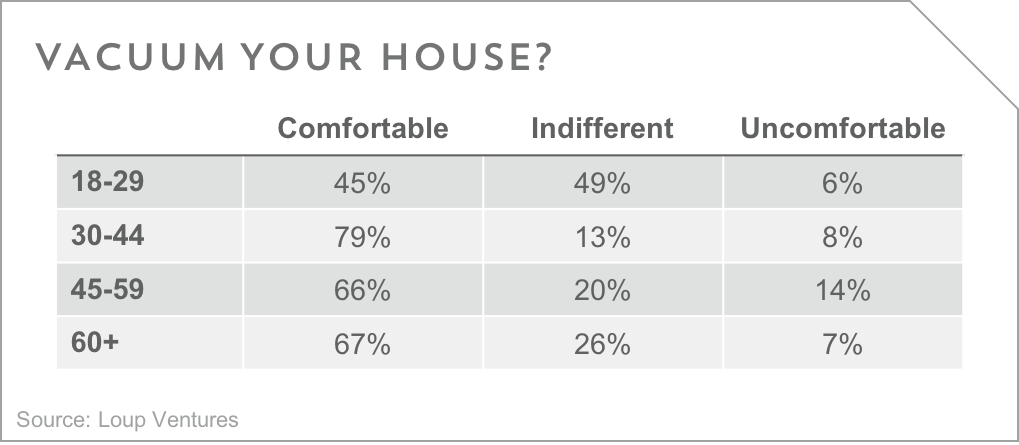
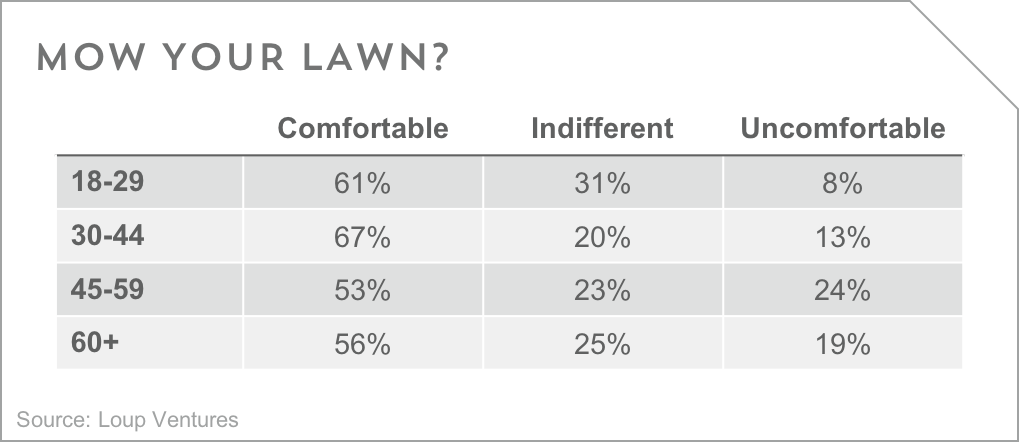
 Transportation. Our survey results indicated a general indifference to a robot controlling a subway or train ride, but less comfort with driving a car or piloting a plane. We believe this relates to the relative risk of downside due to robotic failure as mentioned in the prior section. It’s hard to imagine a catastrophic subway accident, but easy to imagine a major car accident or downed plane. Interestingly, the 40-59 demo, or Gen X, was the most uncomfortable of the demo groups, with on average 65% of responses indicating uncomfortable or extremely uncomfortable. We suspect relatively risk-averse Gen X upbringings and presence of young or teenage children may account for these results.
Transportation. Our survey results indicated a general indifference to a robot controlling a subway or train ride, but less comfort with driving a car or piloting a plane. We believe this relates to the relative risk of downside due to robotic failure as mentioned in the prior section. It’s hard to imagine a catastrophic subway accident, but easy to imagine a major car accident or downed plane. Interestingly, the 40-59 demo, or Gen X, was the most uncomfortable of the demo groups, with on average 65% of responses indicating uncomfortable or extremely uncomfortable. We suspect relatively risk-averse Gen X upbringings and presence of young or teenage children may account for these results.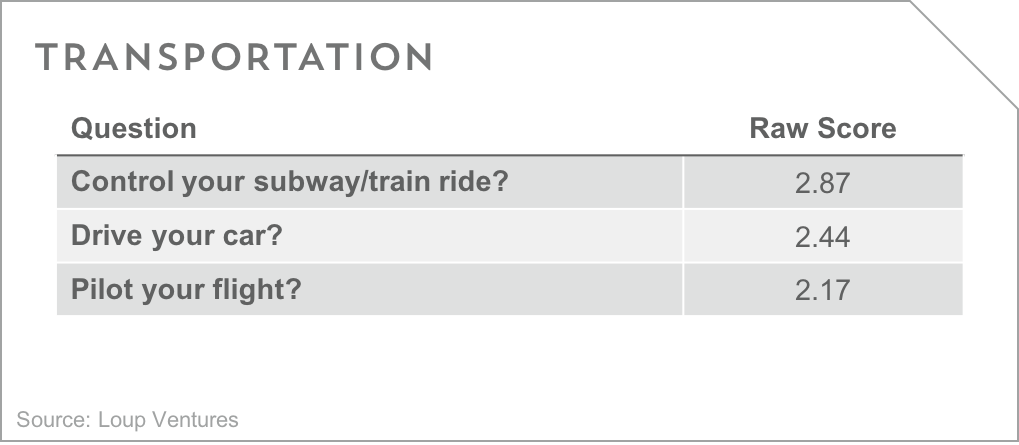

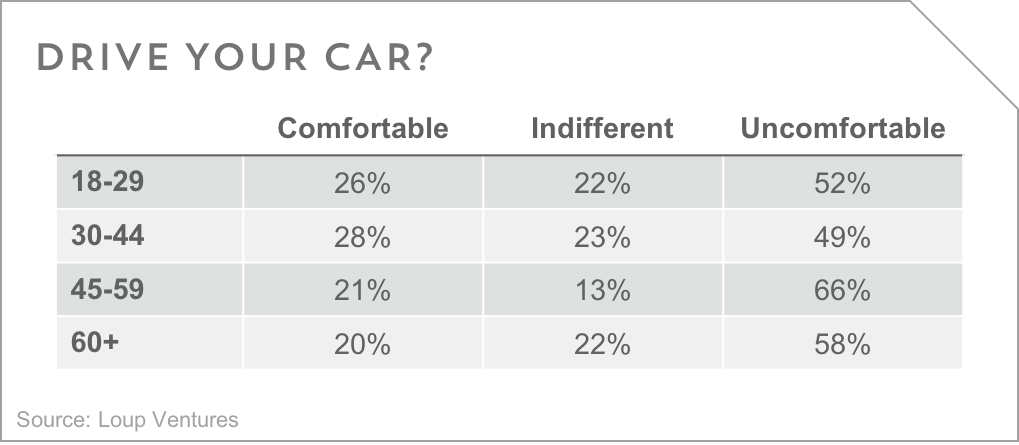
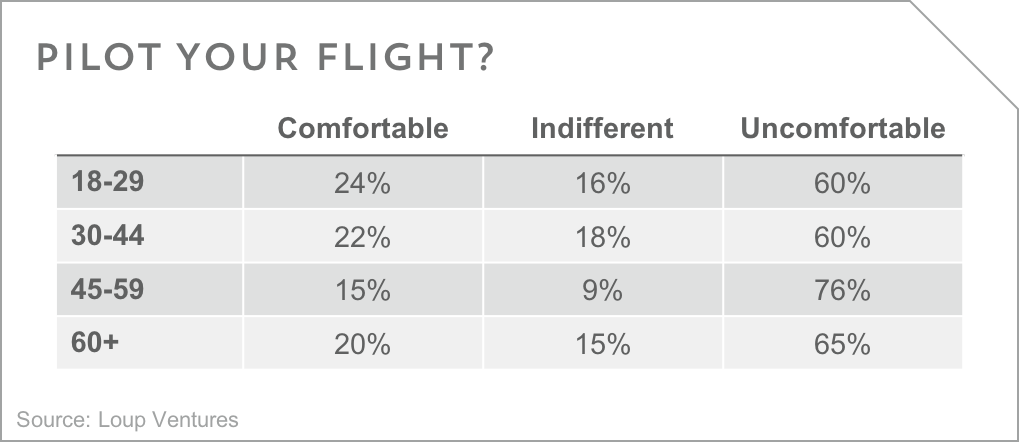 Personal/family livelihood. Given the discomfort in letting a robot drive a car, it’s not surprising that most people aren’t ready to let robots do even more personal tasks like perform surgery or babysit. Again, downside risk to robotic failure is very apparent for both of these tasks, thus the lean toward discomfort. While babysitting requires empathy, which we view a one of the three key advantages humans hold over robots in addition to creativity and community, robots should theoretically be better surgeons than humans. Robo-surgeons have steadier and more precise instruments and can process more data about the body simultaneously than a human surgeon. Consistent high levels of discomfort to this category are seen across all demographics. Robo-babysitters scored an average of 20 points higher on the discomfort scale vs robo-surgeons.
Personal/family livelihood. Given the discomfort in letting a robot drive a car, it’s not surprising that most people aren’t ready to let robots do even more personal tasks like perform surgery or babysit. Again, downside risk to robotic failure is very apparent for both of these tasks, thus the lean toward discomfort. While babysitting requires empathy, which we view a one of the three key advantages humans hold over robots in addition to creativity and community, robots should theoretically be better surgeons than humans. Robo-surgeons have steadier and more precise instruments and can process more data about the body simultaneously than a human surgeon. Consistent high levels of discomfort to this category are seen across all demographics. Robo-babysitters scored an average of 20 points higher on the discomfort scale vs robo-surgeons.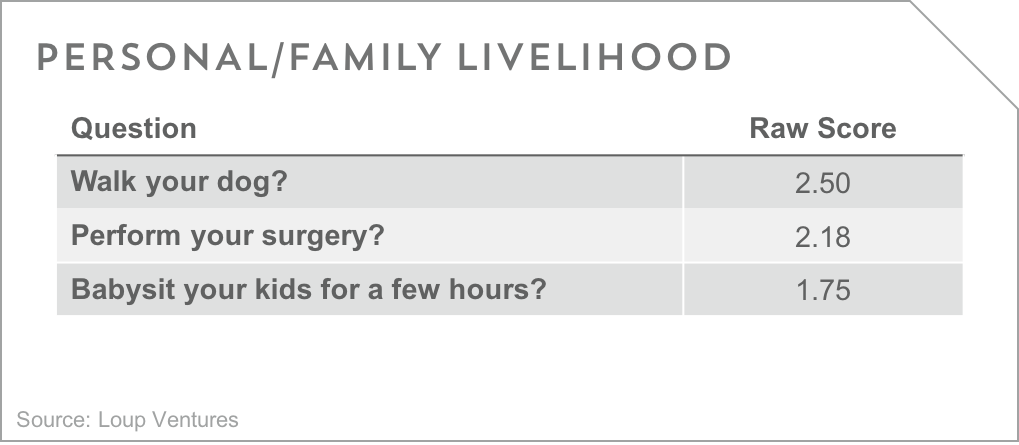
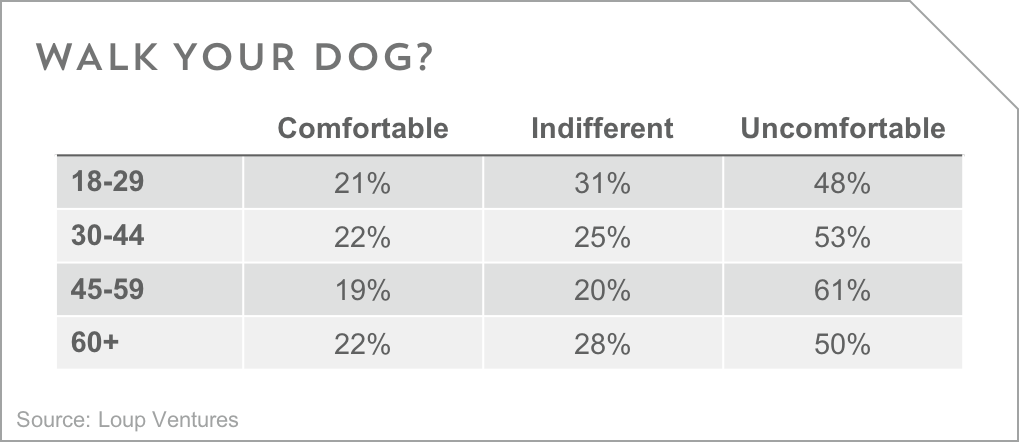
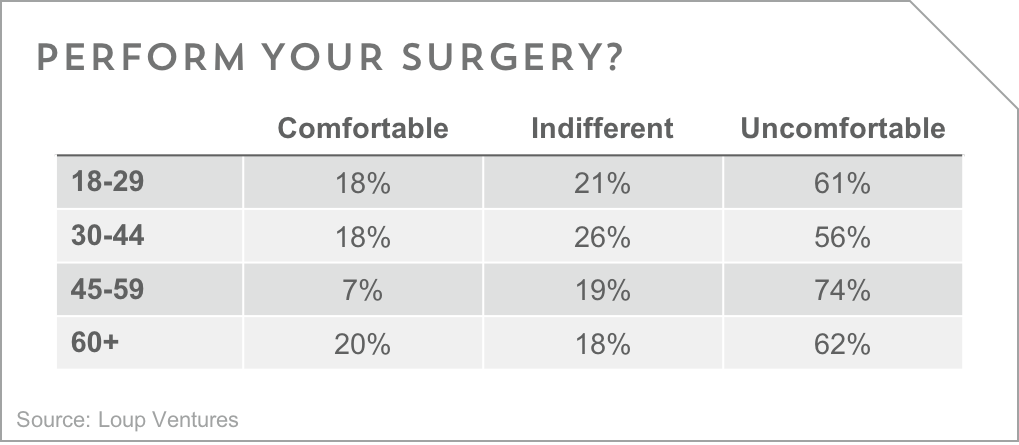
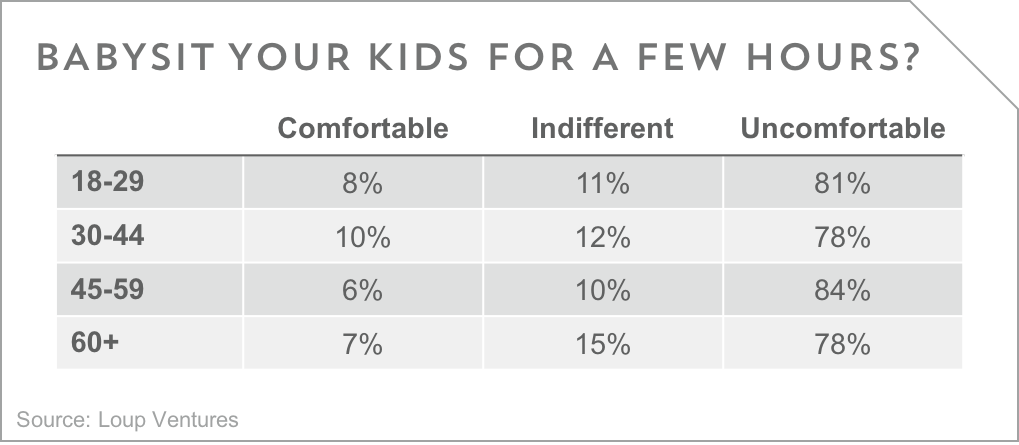 Professional Services. Survey respondents were generally uncomfortable in relying on robots to perform professional services aside from personal training. We feel this again relates to risk. While there is no mortal risk to poorly performed taxes or legal services, there is a risk of financial cost from those failures. The 18-29 year old demographic showed the most comfort using robo-accountants or robo-lawyers.
Professional Services. Survey respondents were generally uncomfortable in relying on robots to perform professional services aside from personal training. We feel this again relates to risk. While there is no mortal risk to poorly performed taxes or legal services, there is a risk of financial cost from those failures. The 18-29 year old demographic showed the most comfort using robo-accountants or robo-lawyers.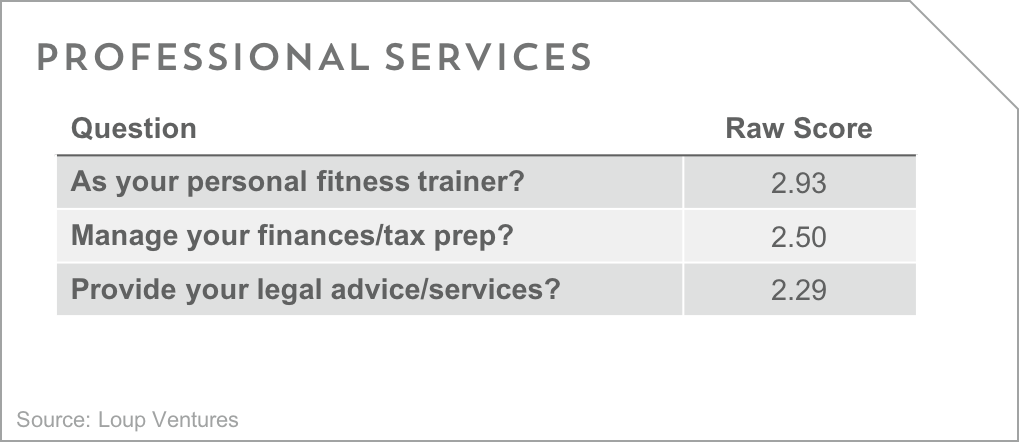
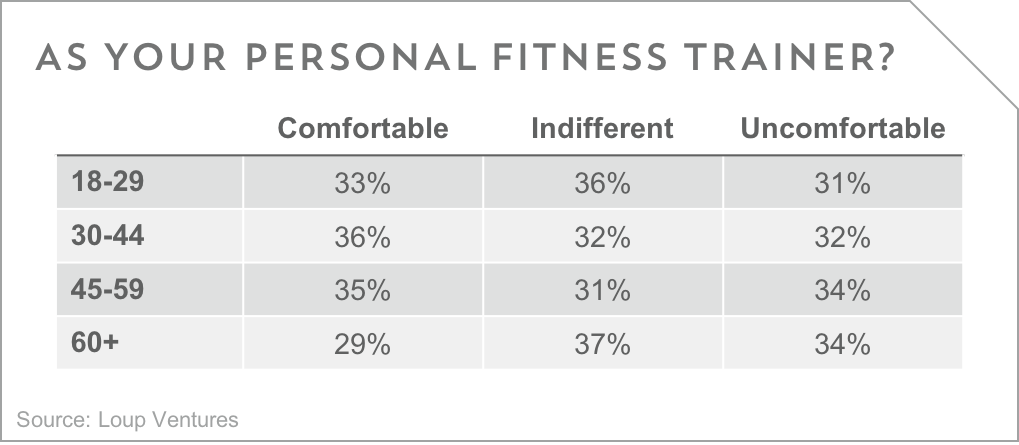
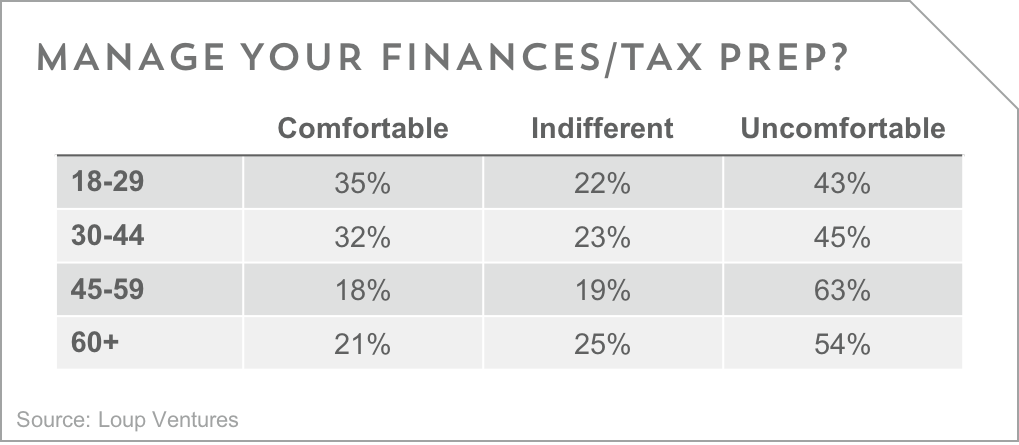
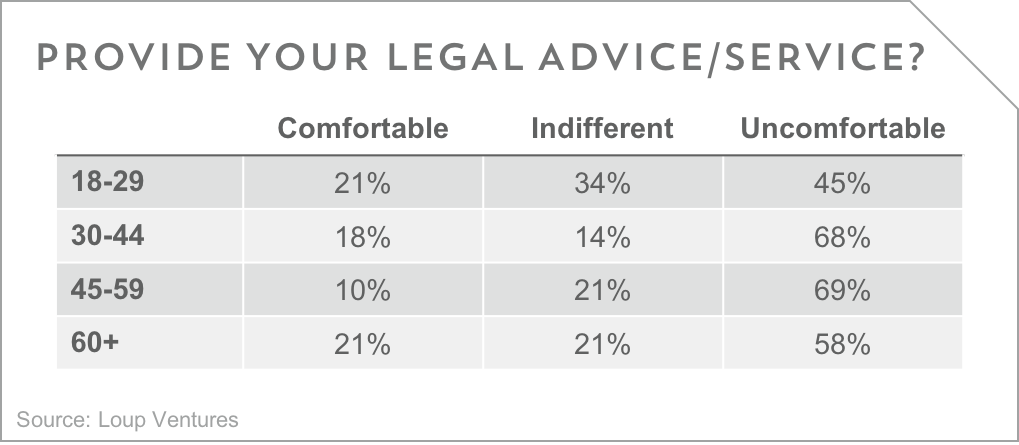 Overall, we have some trust to build between consumers and robots to get to the automated future we envision, particularly with tasks perceived to be “dangerous.” As humans come to accept that robots can perform almost all “dangerous” tasks with greater safety than humans, the associated comfort levels should rise.
Overall, we have some trust to build between consumers and robots to get to the automated future we envision, particularly with tasks perceived to be “dangerous.” As humans come to accept that robots can perform almost all “dangerous” tasks with greater safety than humans, the associated comfort levels should rise.









